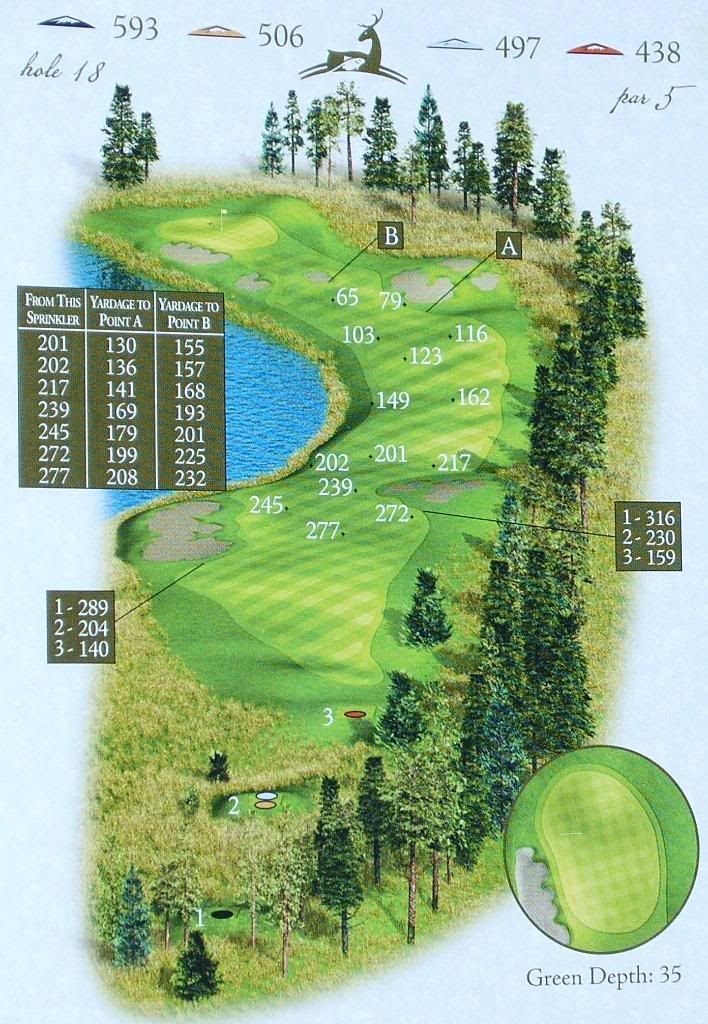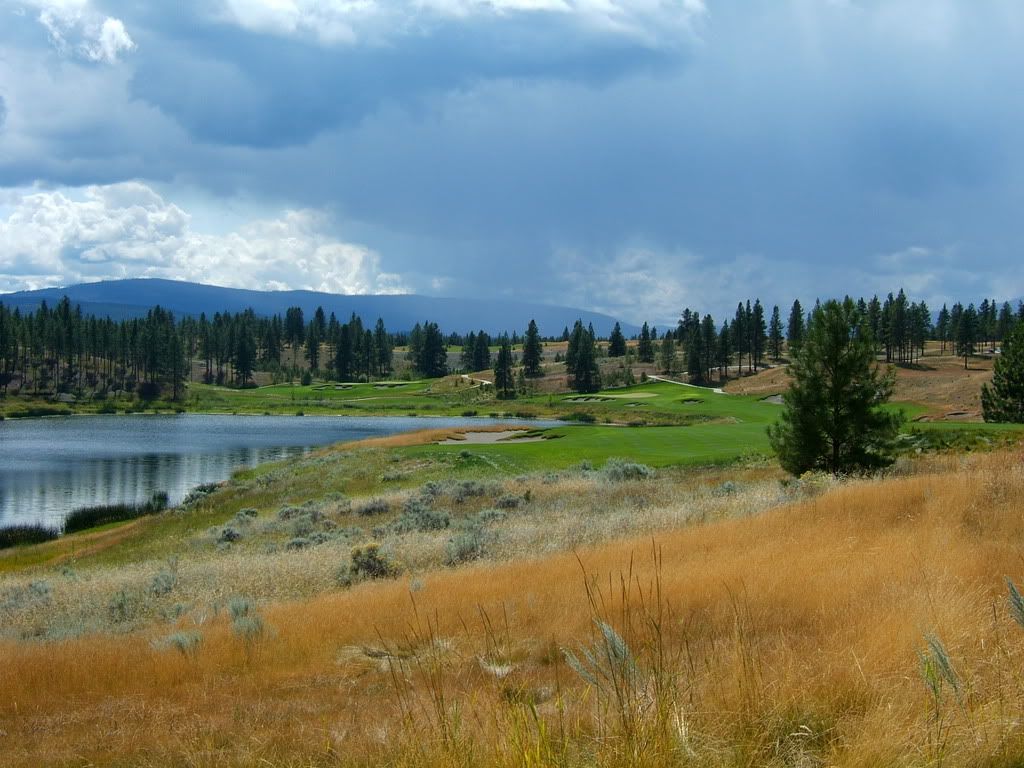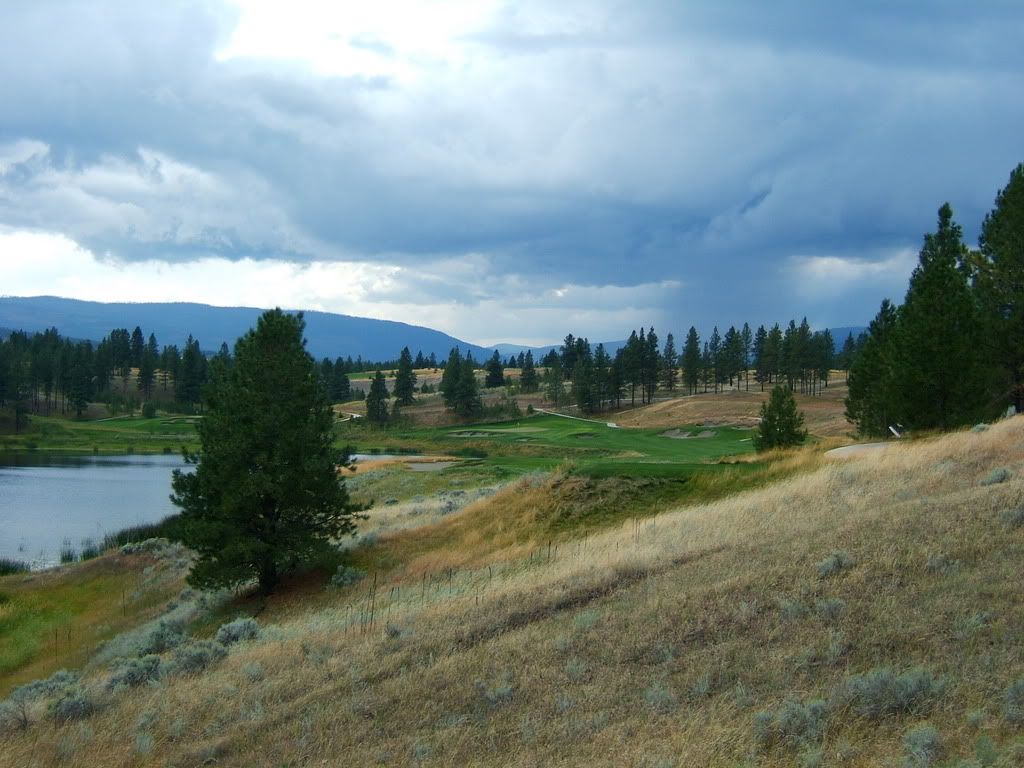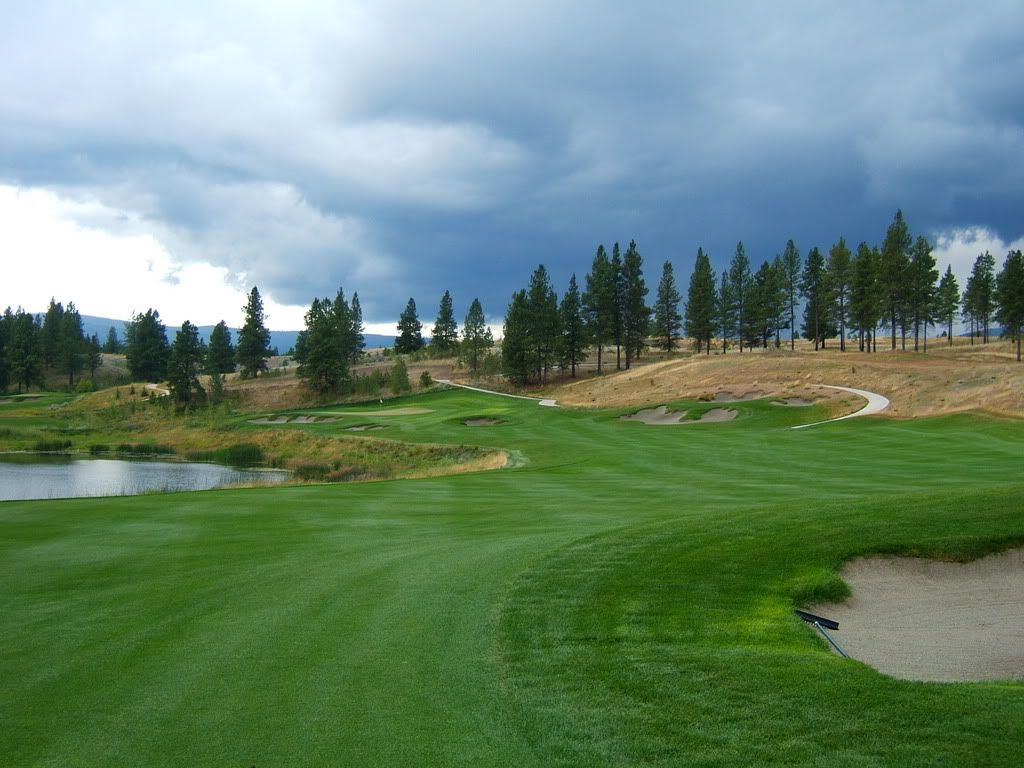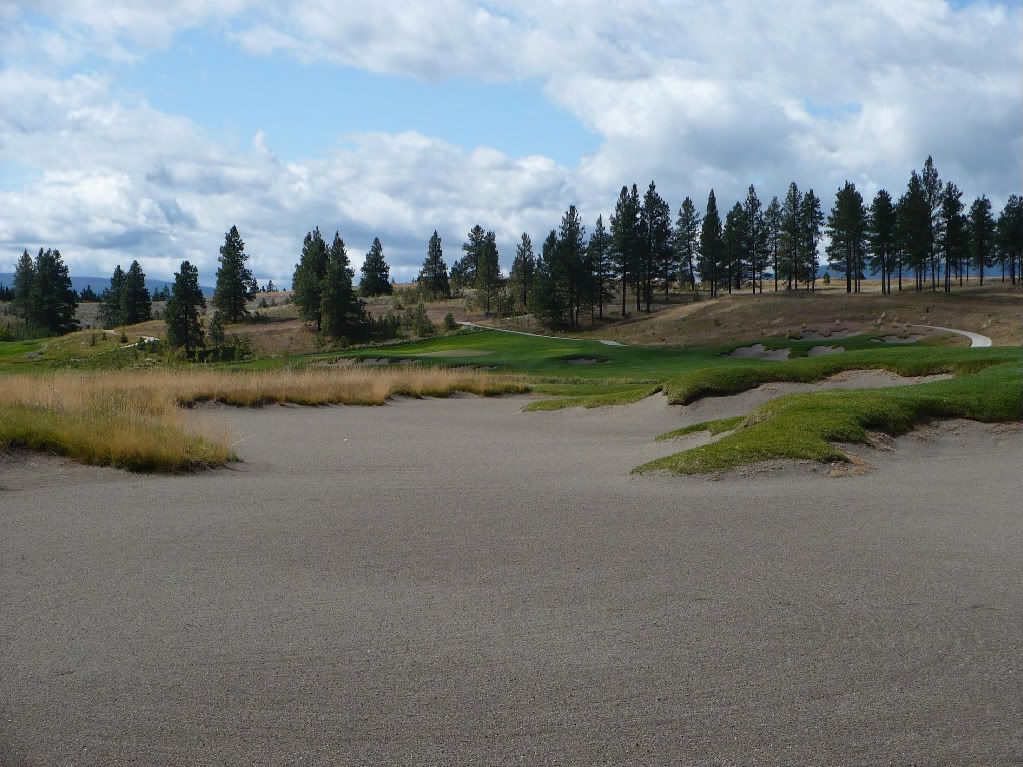
I recently had the pleasure of playing at The Wilderness Club in Eureka, Montana. It is a new course by Nick Faldo and Schmidt/Curley Design (a Faldo Signature course). There were many luminaries there including our own Jeff Doerr and his son Tim, Lee Schmidt, Brian Curley, many of the SC gang, Travelin’ Joe Passov, and last but not least, His Highness The Emperor of La Habra.
The course was a lot of fun to play, it sits at about 2500-3000 feet and is surrounded by mountains, national parks and forests. It plays to 7207 yards from the tips, but we usually played up a set of tees which were at about 6500 yards. We had a bunch of different kinds of weather from hail to thunderstorms to snow (only on the surrounding mountains) to bright sunshine, though we were informed that summers are usually pretty dry and warm in the area.
The course is built on about 200 feet of pure sand which was USGA spec so the sand was used for the construction of the USGA greens as well as in all the bunkers. It had a nice shade of gray and was quite firm. It was a joy to play out of such firm sand (I don’t know what you fluffy-sand guys are thinking).
The Bluegrass fairways were maintained relatively firm and the ground game was an option (and I frequently took advantage of it). The bent greens were smooth and fast, but not too fast.
Many of the greens displayed a feature we’re calling “reverse swales”. Perhaps there is another name for them. They are basically swales that carry up into the putting surfaces and if you’re in or around one affect the putt in strange ways. You could have to line up your putt in the opposite direction of the overall break of the green to counteract the swale’s effect at the start of the putt. There were also several greens which sloped from front to back.
I had never played a course with such quantities of that long fescue off to the sides of play. Unfortunately I was fairly successful in my first couple of attempts to play out of it. I say that because it led to one of my more interesting holes. Here is my sequence for holes 10-18 on Saturday morning: par, bogey, par, par, quintuple bogey, par, par, par, bogey.
(images courtesy of Tommy, Jeff, and moi)
Yardages
7207 74.2/146
6550 71.2/136
6119 66.7/118
5431 Women's 70.8/131
Range:

Front 9:
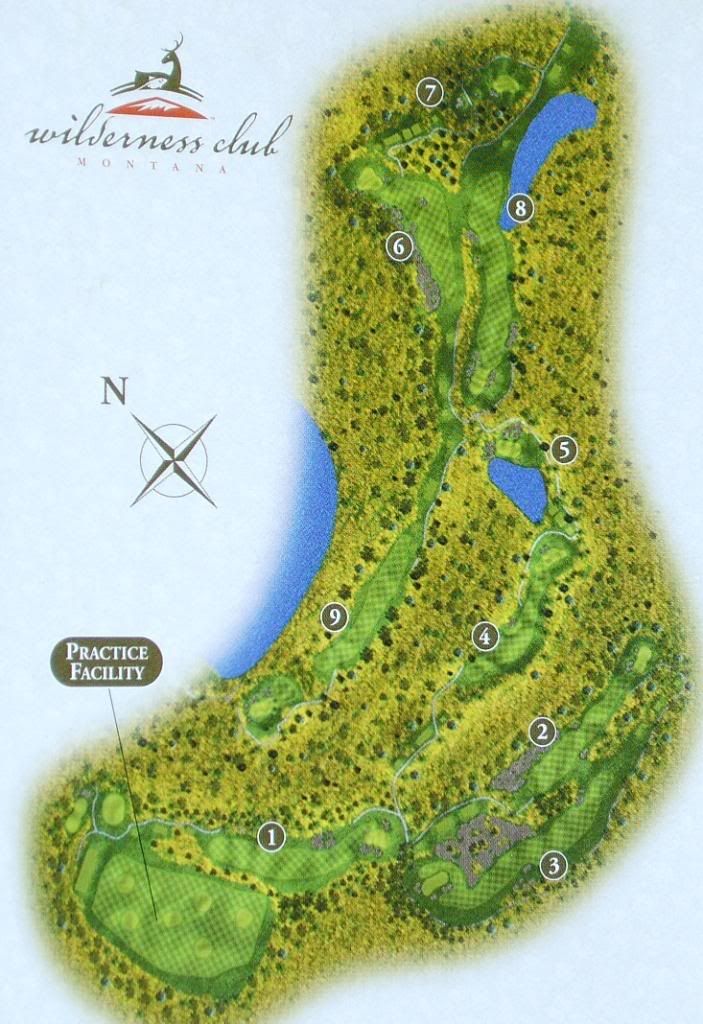
Hole 1: (Notwithstanding the lack of photos, this was an enjoyable hole. The yardage guide does not give a proper idea of the amount of drop from the tee to the landing area, nor of the rise from the fairway to the green.)
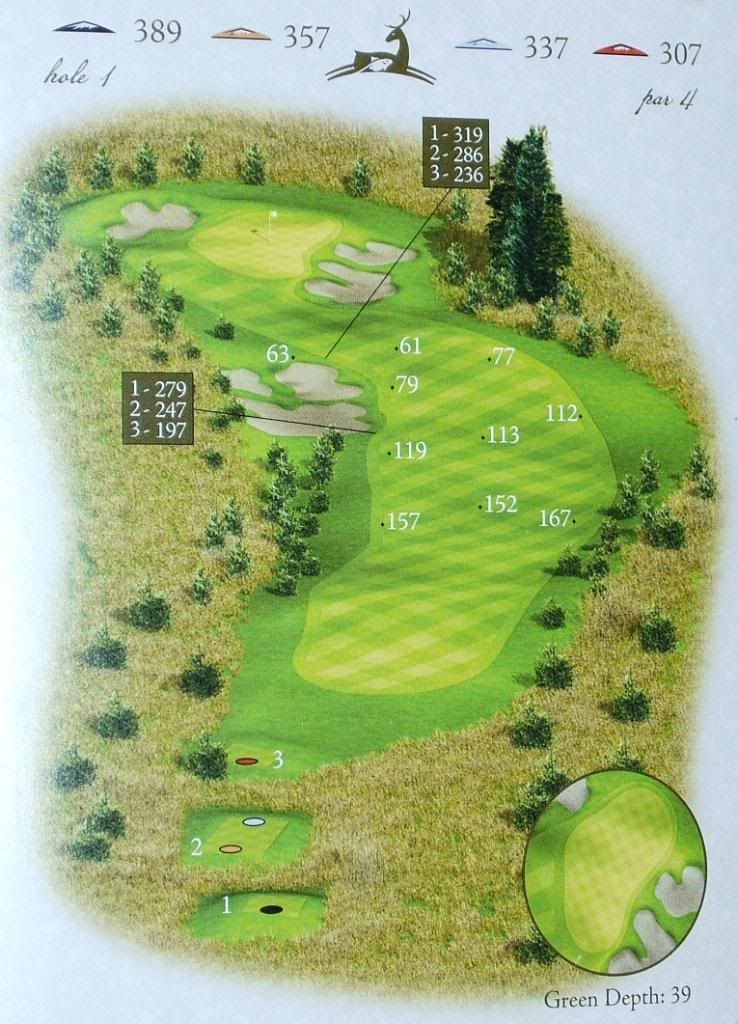
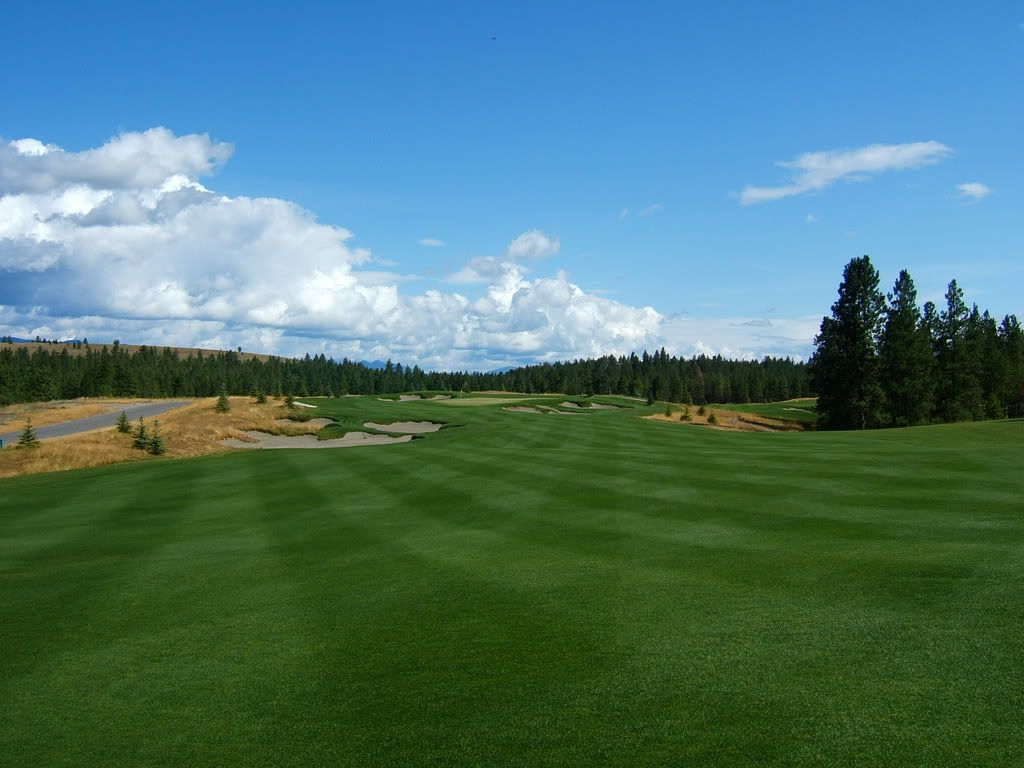
Hole 2: (A really nice looking hole where you are rewarded with a 20+ yard distance advantage on your approach if you can turn the ball over.)

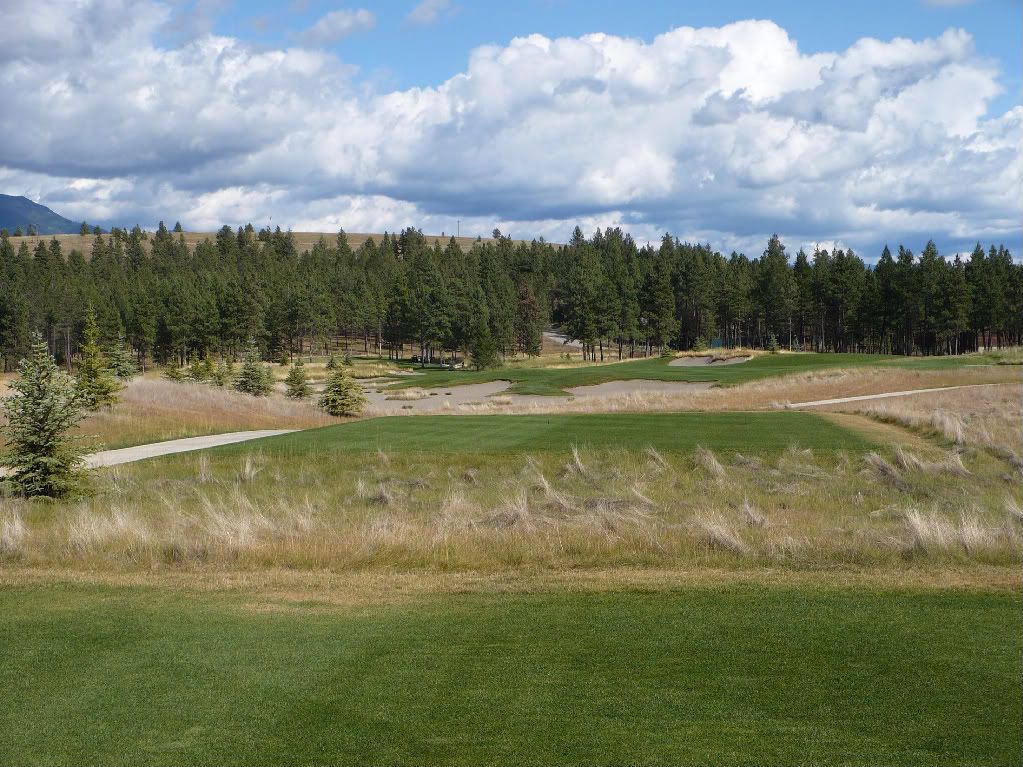
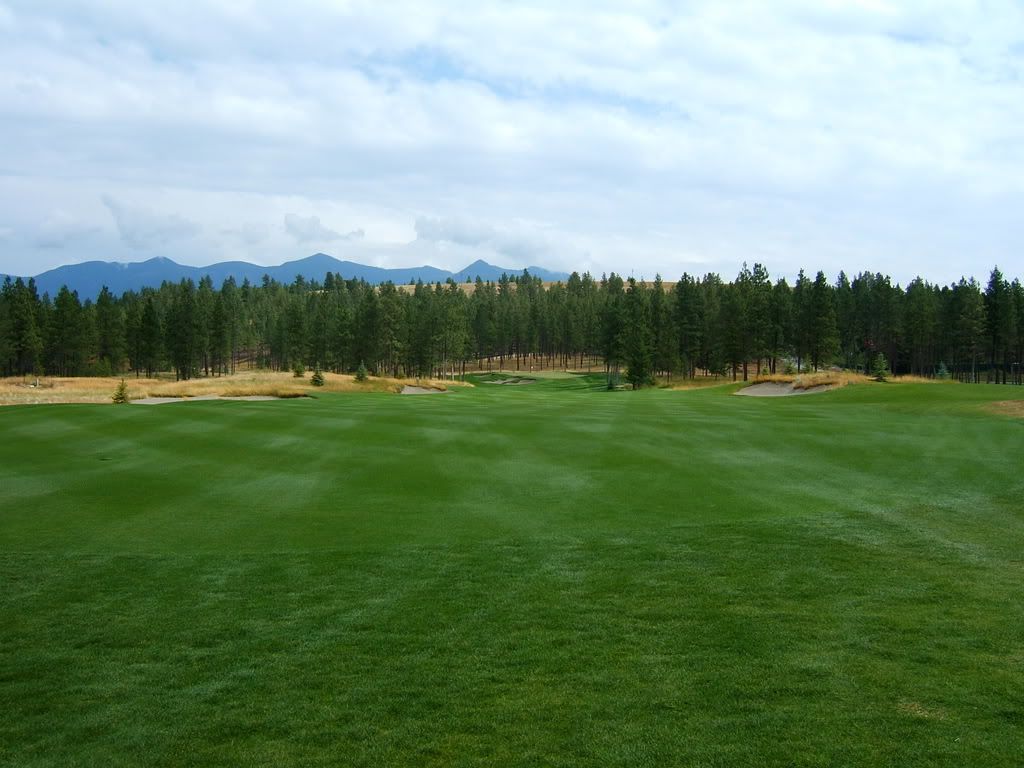
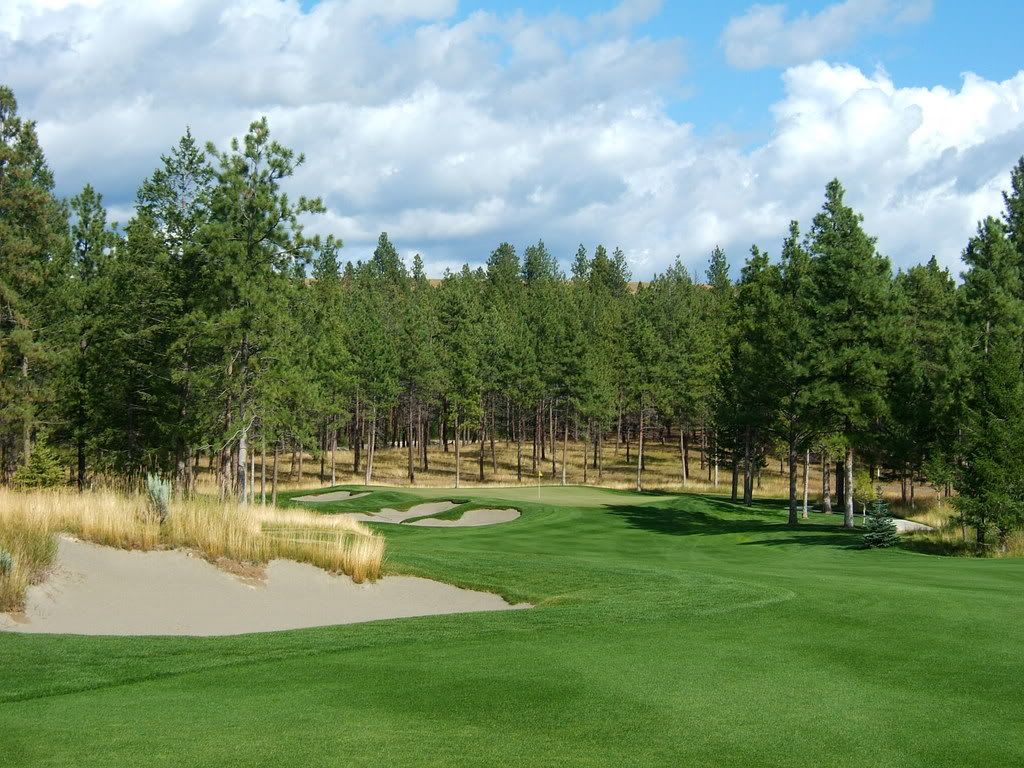

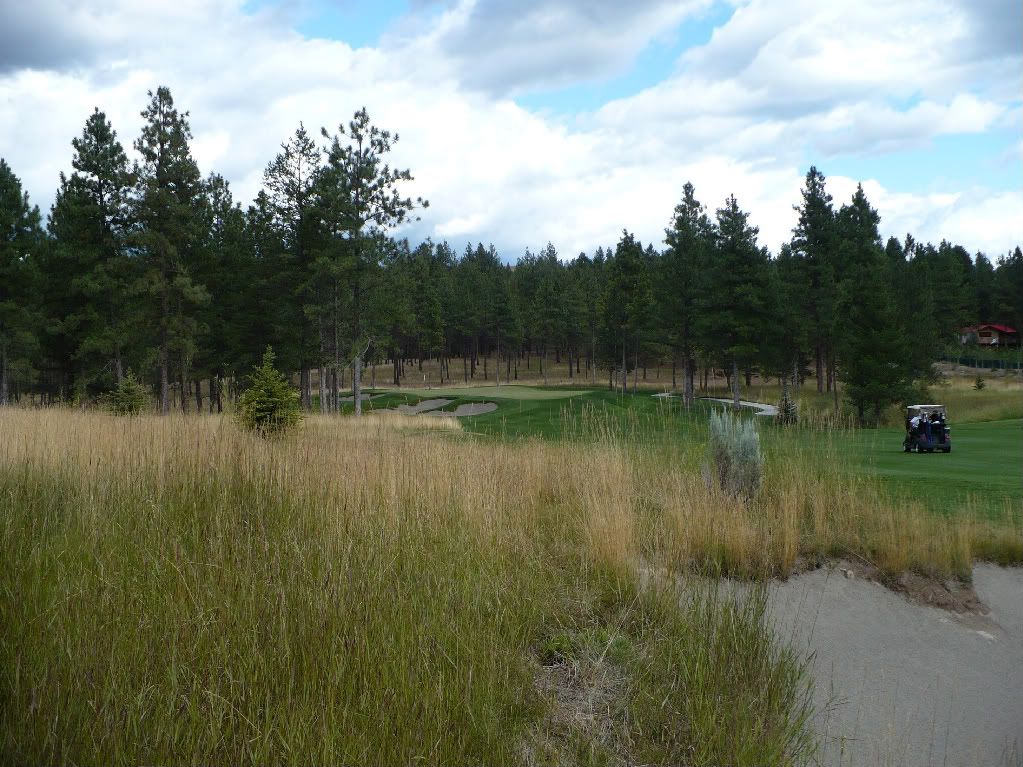

Hole 3: (A reachable par 5 where the weaker player can tack further to the left to avoid the single large waste area. But there is still some fun/challenge in it for the weaker player because of the optical illusion on the second shot that there are several distinct bunkers to avoid and the semi-hidden landing area.)
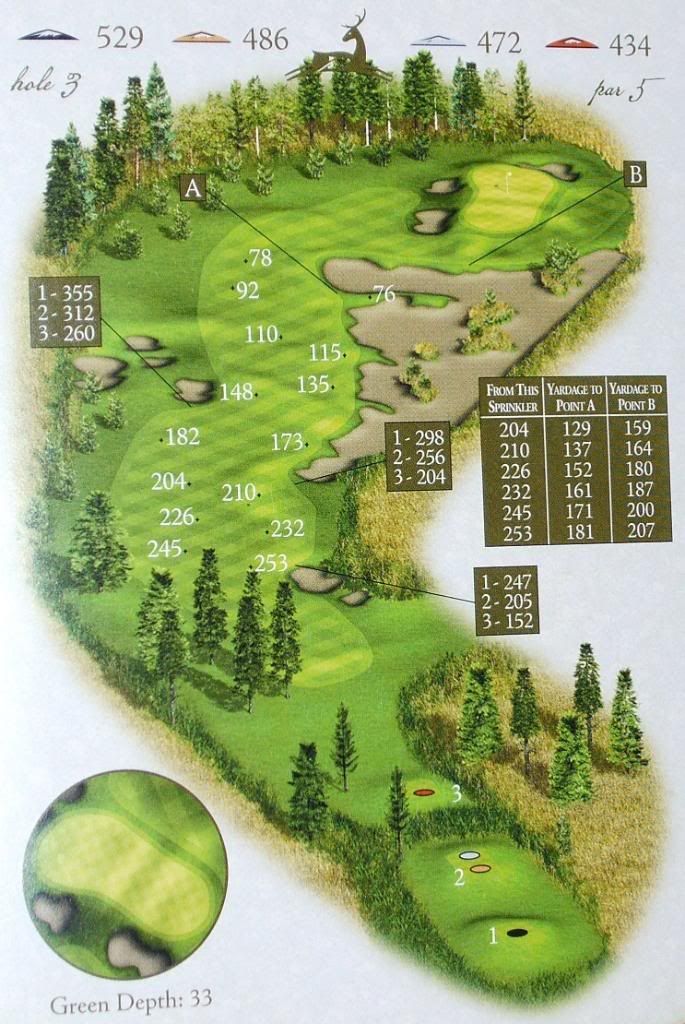
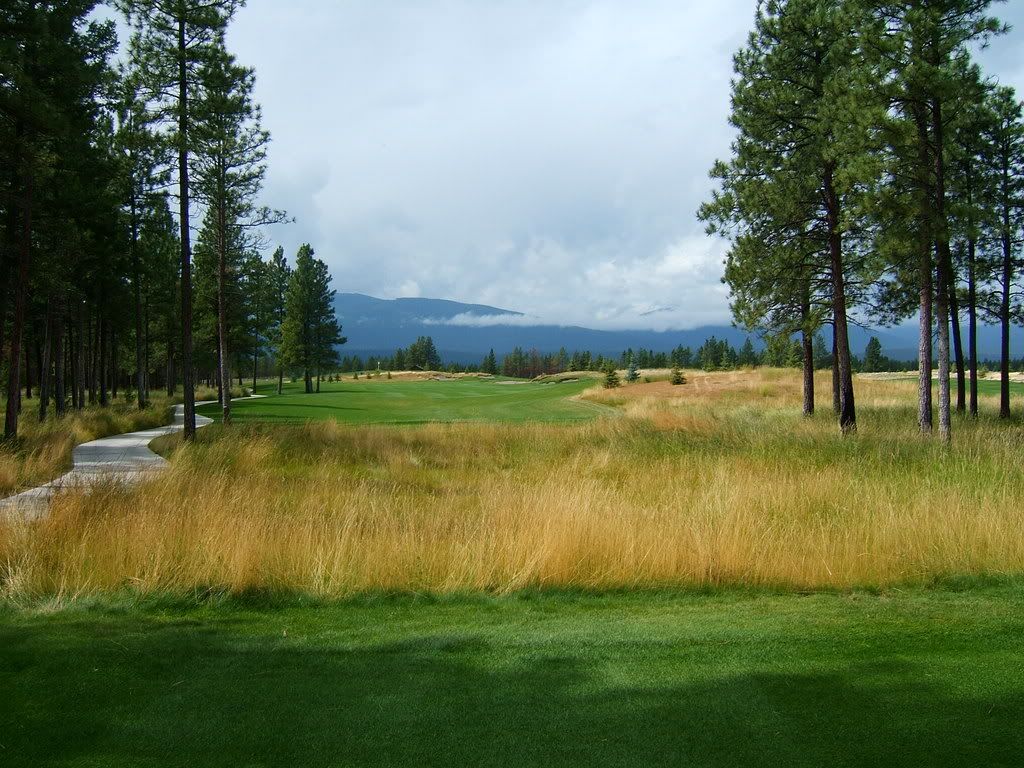

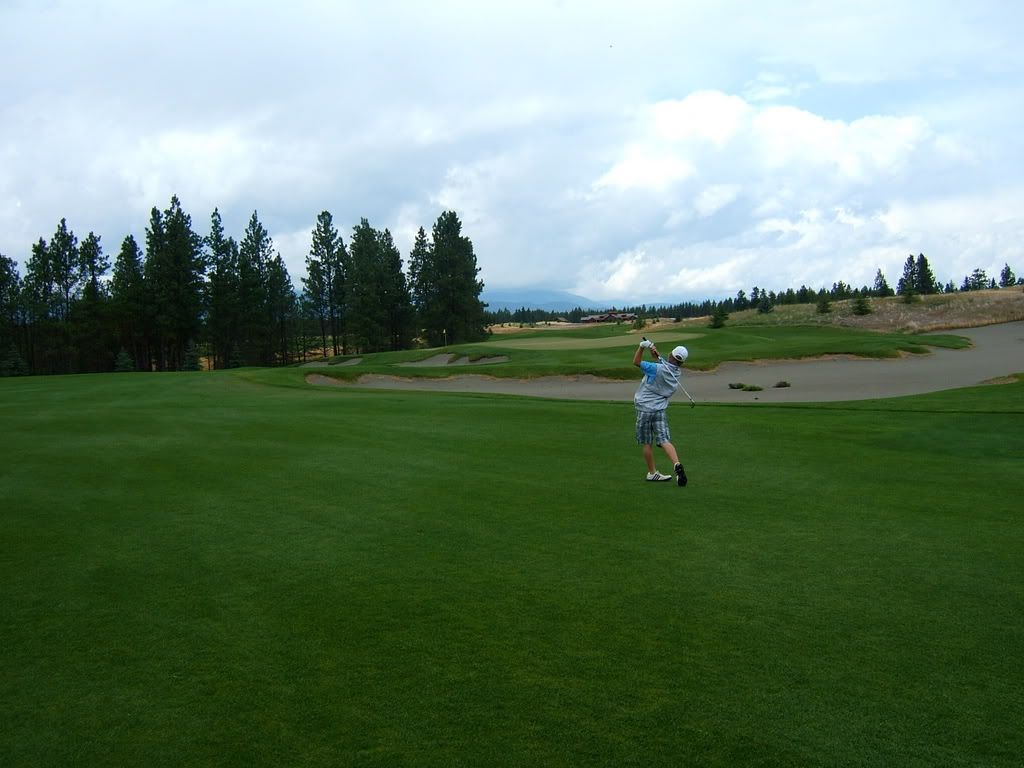



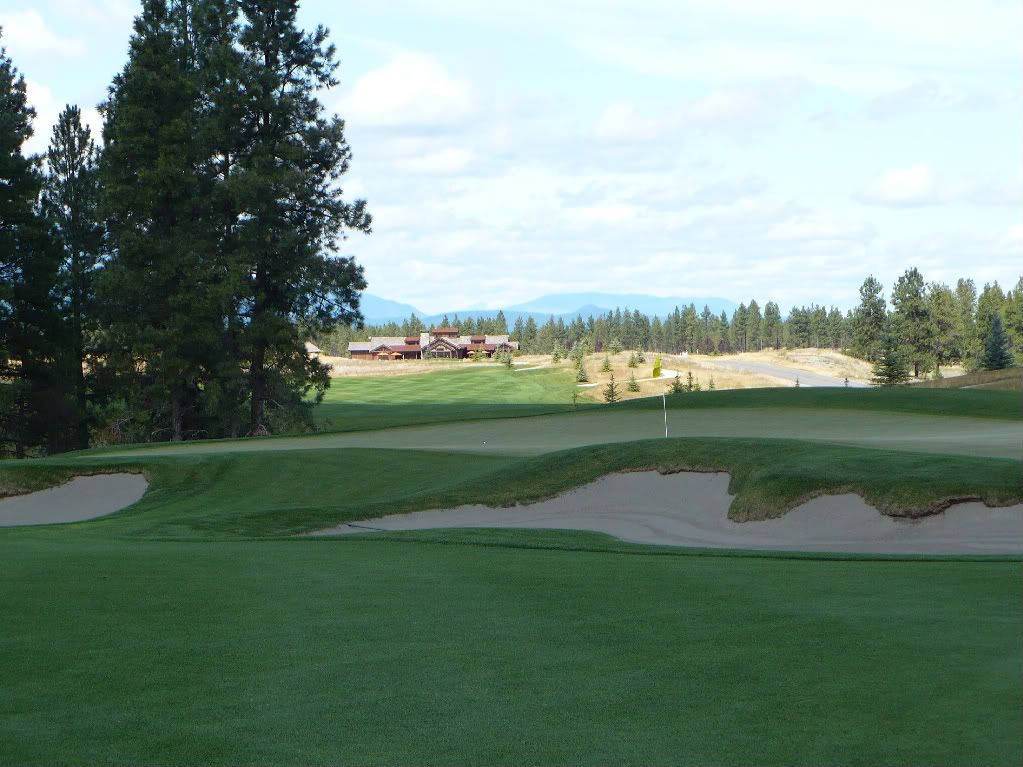
Hole 4: (My favorite hole on the course. Tommy said it displayed a lot of the strategy and thinking of A.W. Tillinghast. This dogleg to the right with a fallaway fairway rewards being able to move the ball with a better angle/look into the hole. It also features one of the wildest greens on the course with a back-right section which is 5-6 feet lower than the rest of the green. We determined that we’d like to see the that back section made a bit easier as far as keeping the ball on the green from over or above the hole there.)
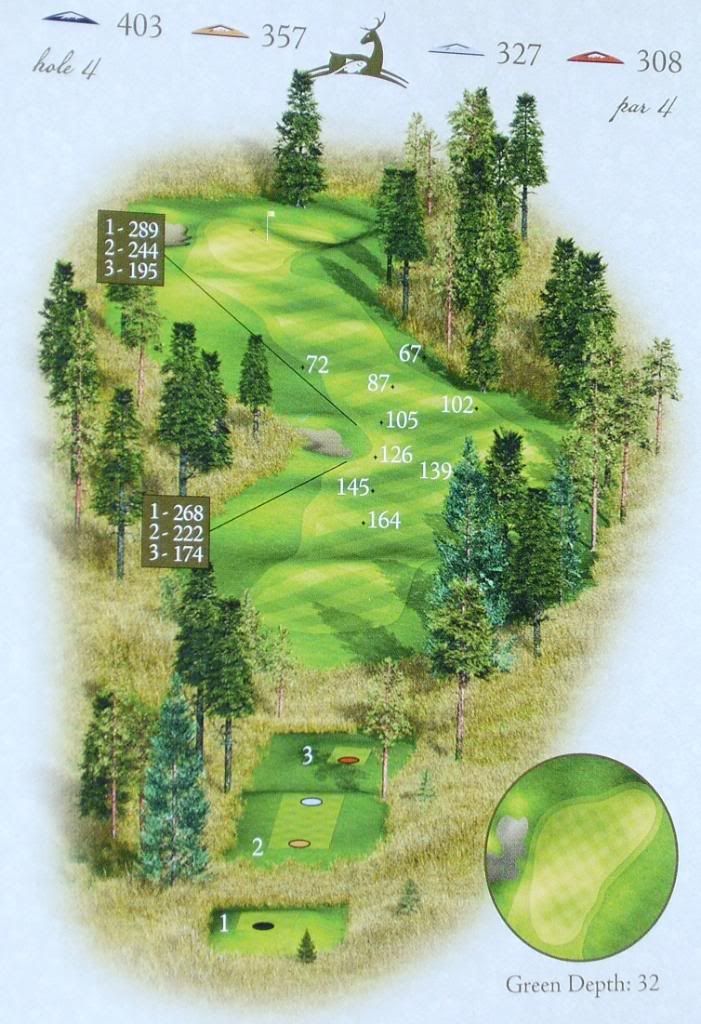

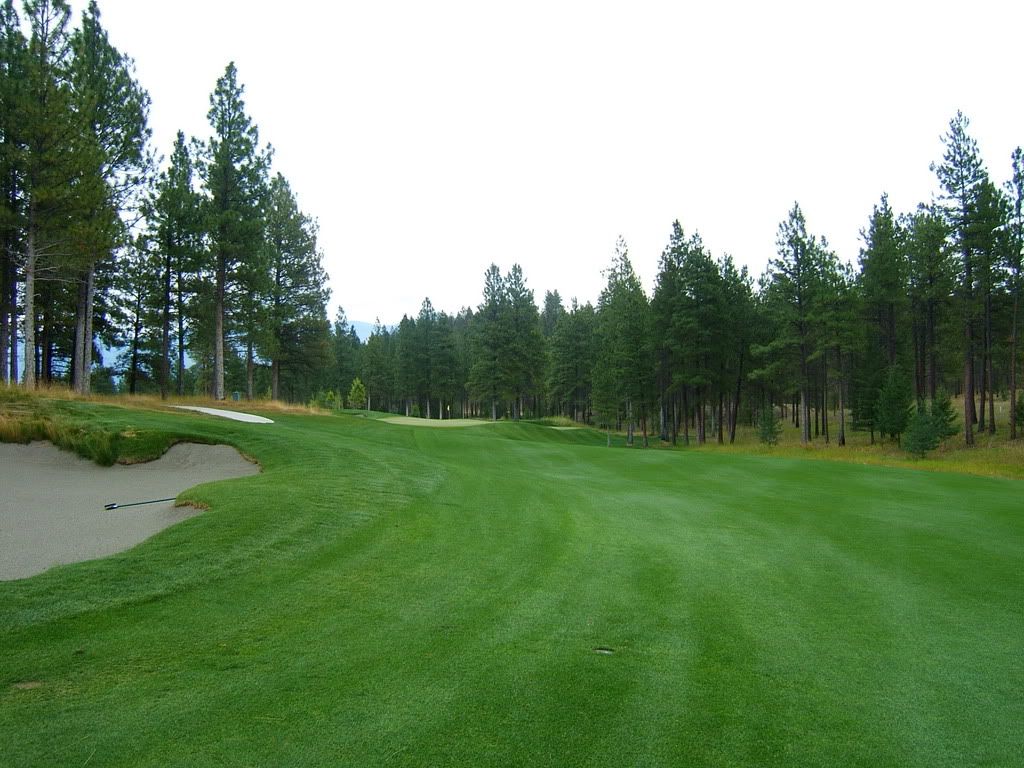

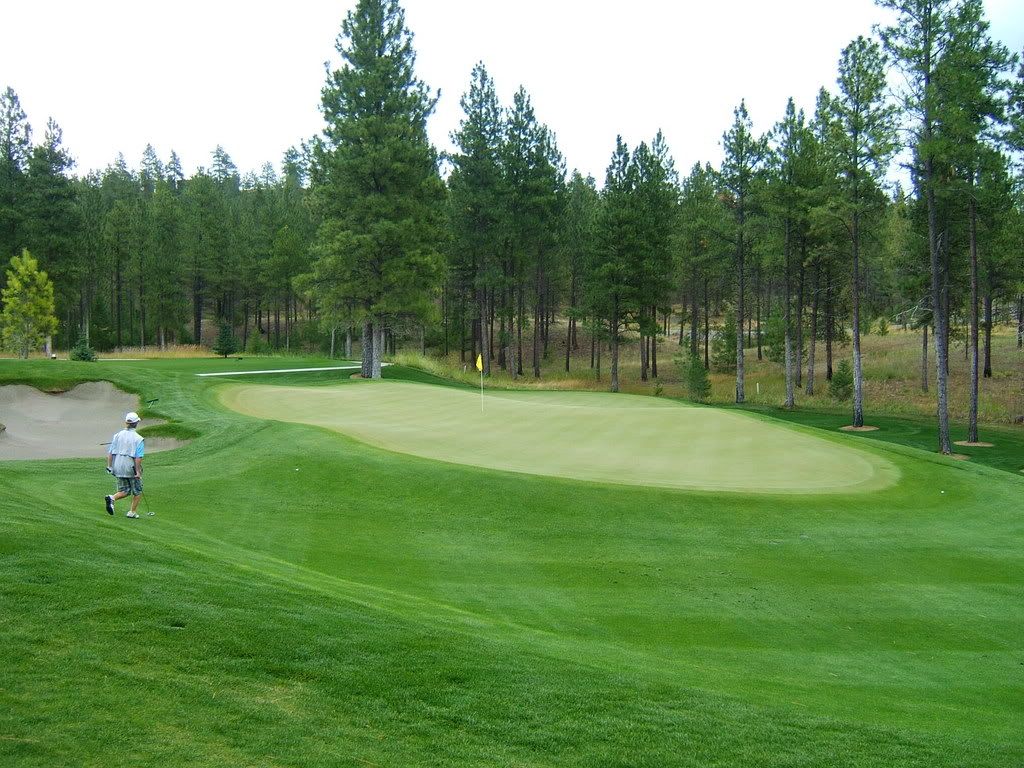
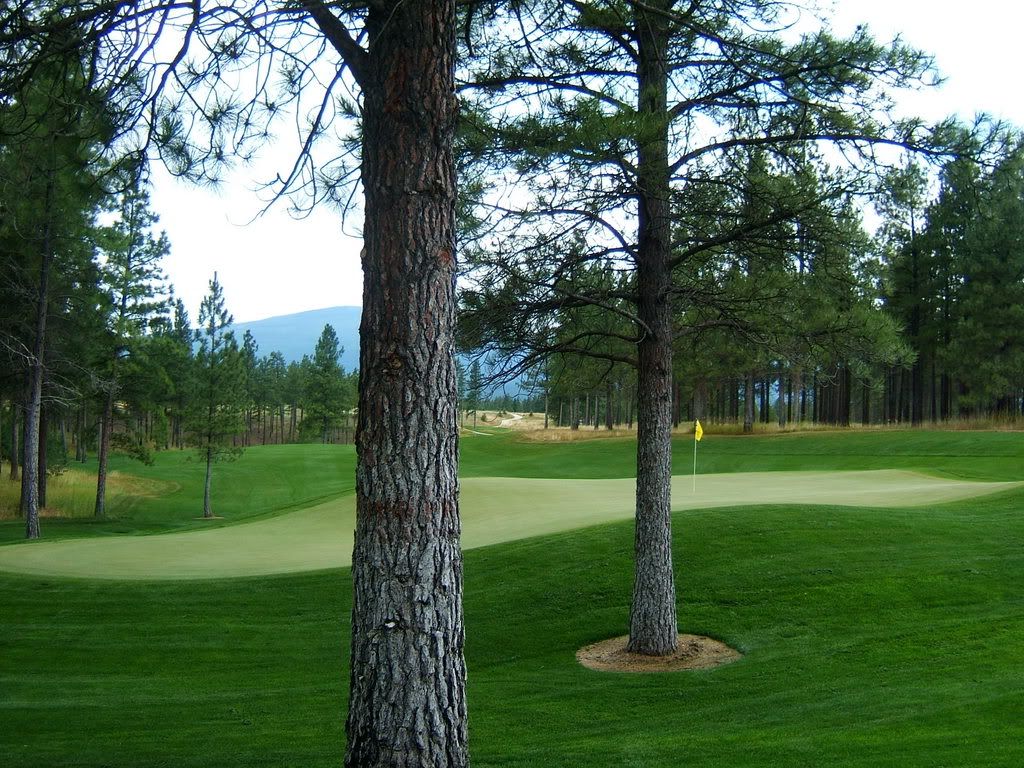
Hole 5: (Probably my least favorite hole on the course, it’s certainly built over the least interesting ground. Basic short par 3 with a man-made pond.)
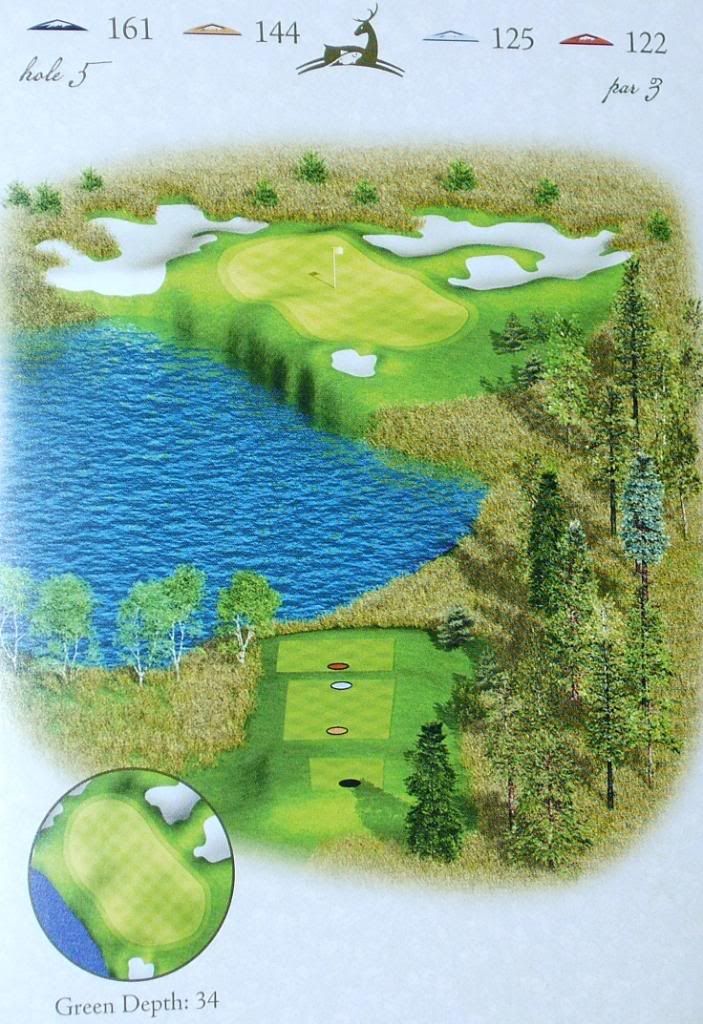
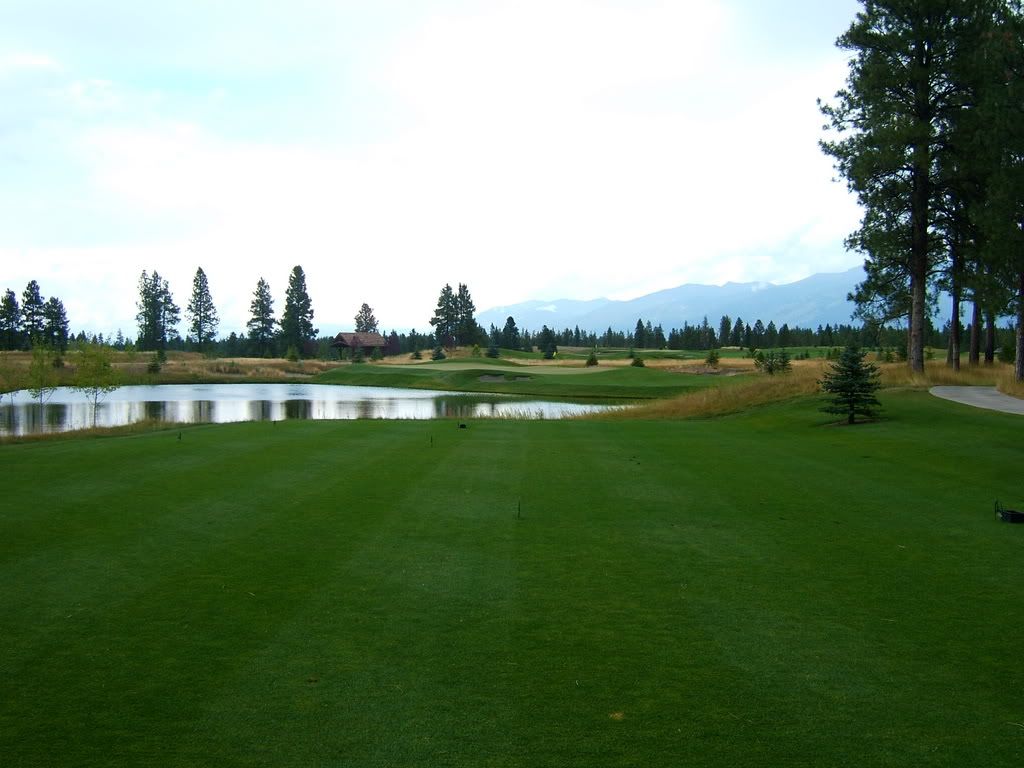

Hole 6: (A short/medium par 4 with a ton of room to the right, but the bunkers left have the effect of drawing you in to hit that direction.)
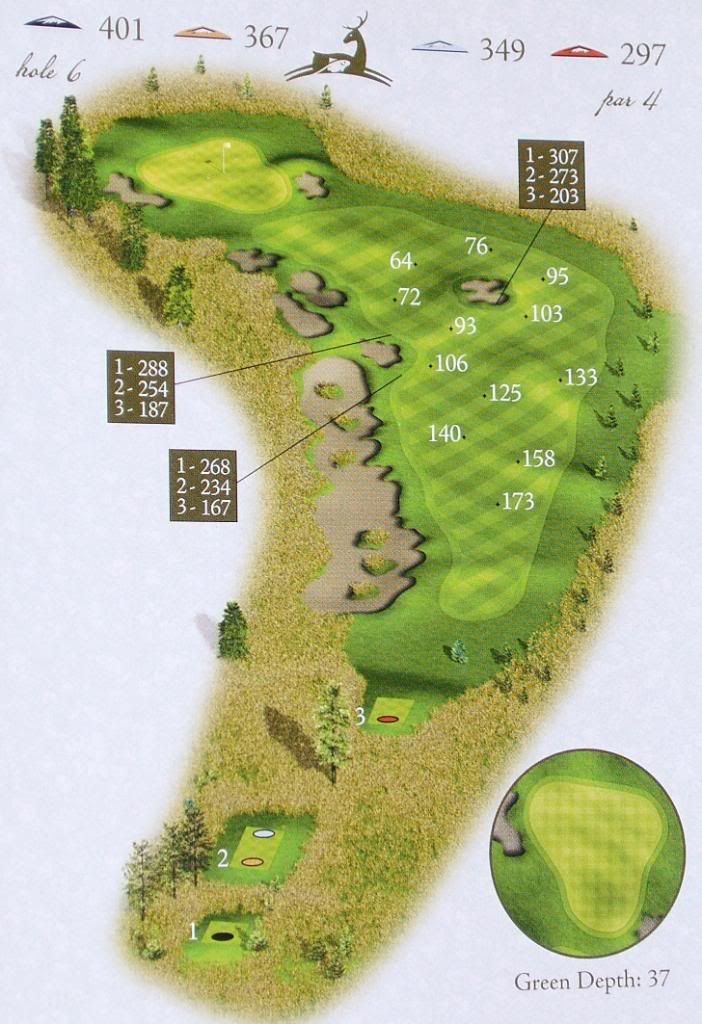
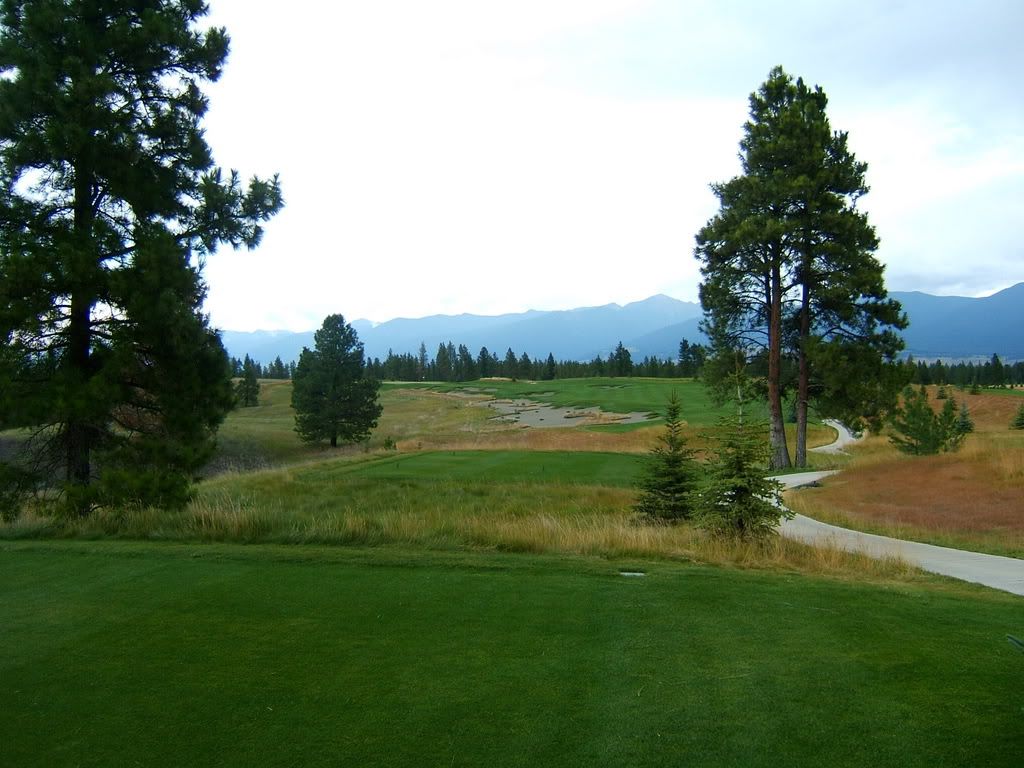
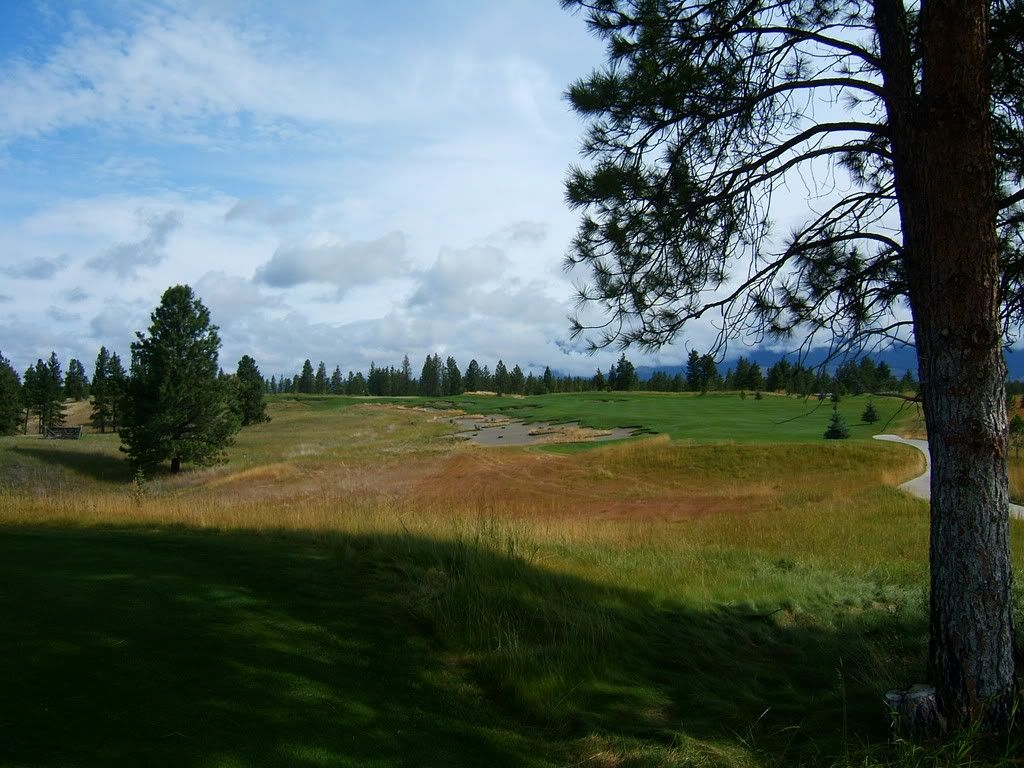
Hole 7: (This par 3 played really long some days. Most days we were on what is shown as an unused box in the image below. It would play 190 to the very front edge and a pin in the back right would approach 250 yards away. When Tommy saw this hole he said “Hirono”.)
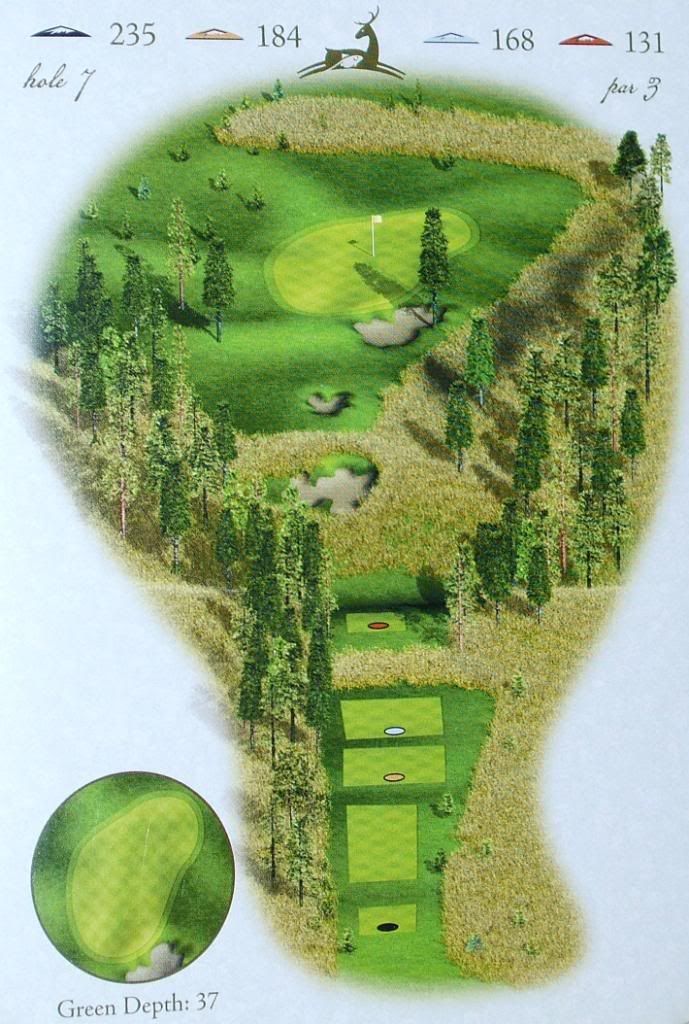
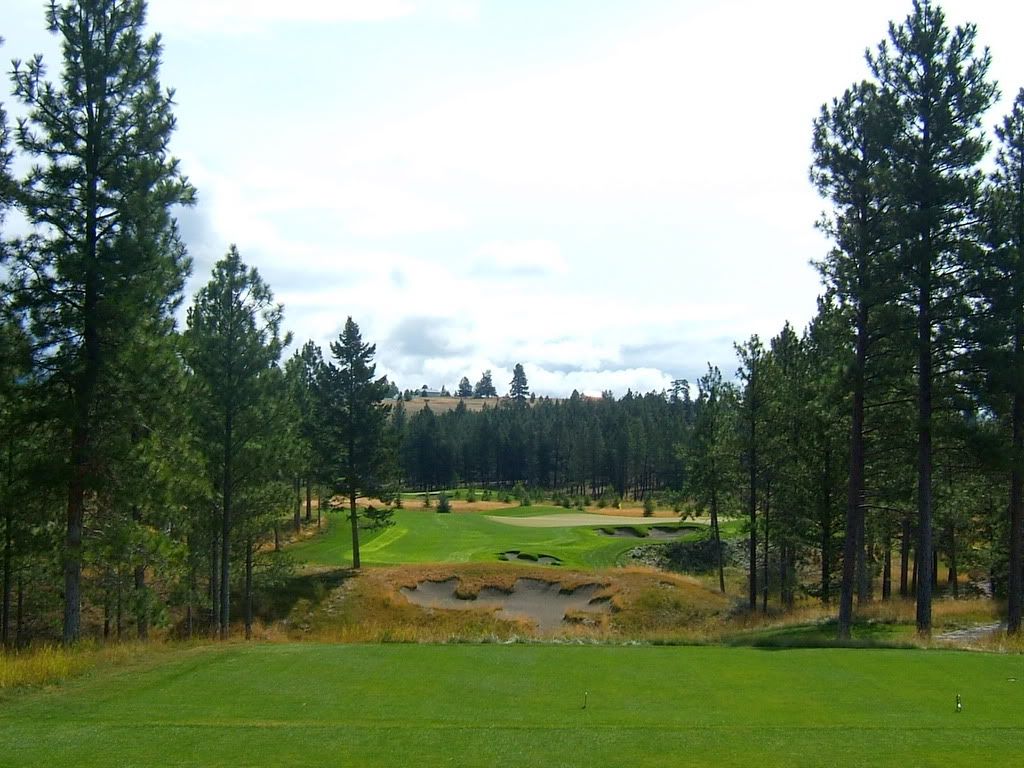
Hole 8: (A par 5 where you are often deceived into playing farther left than you really need to.)
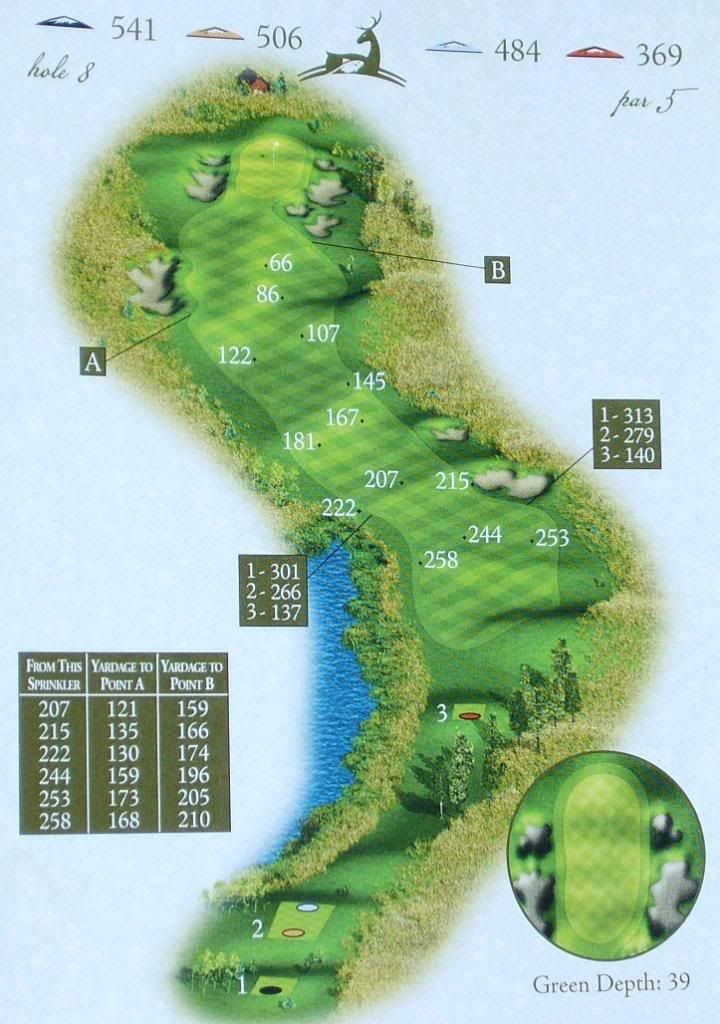
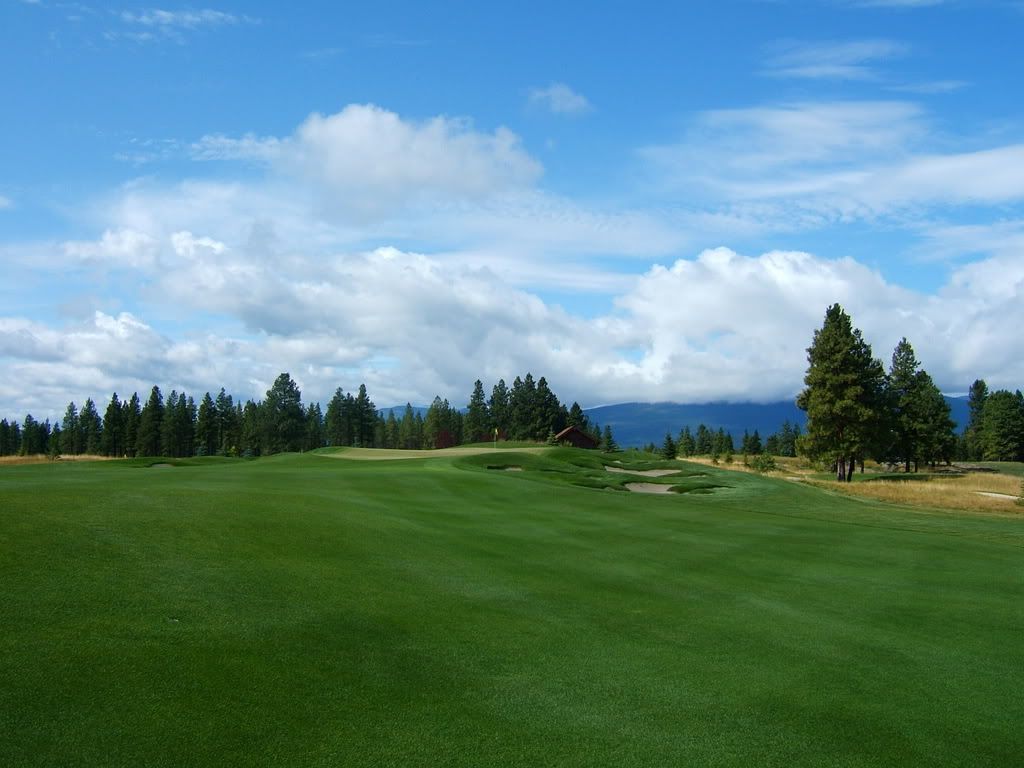
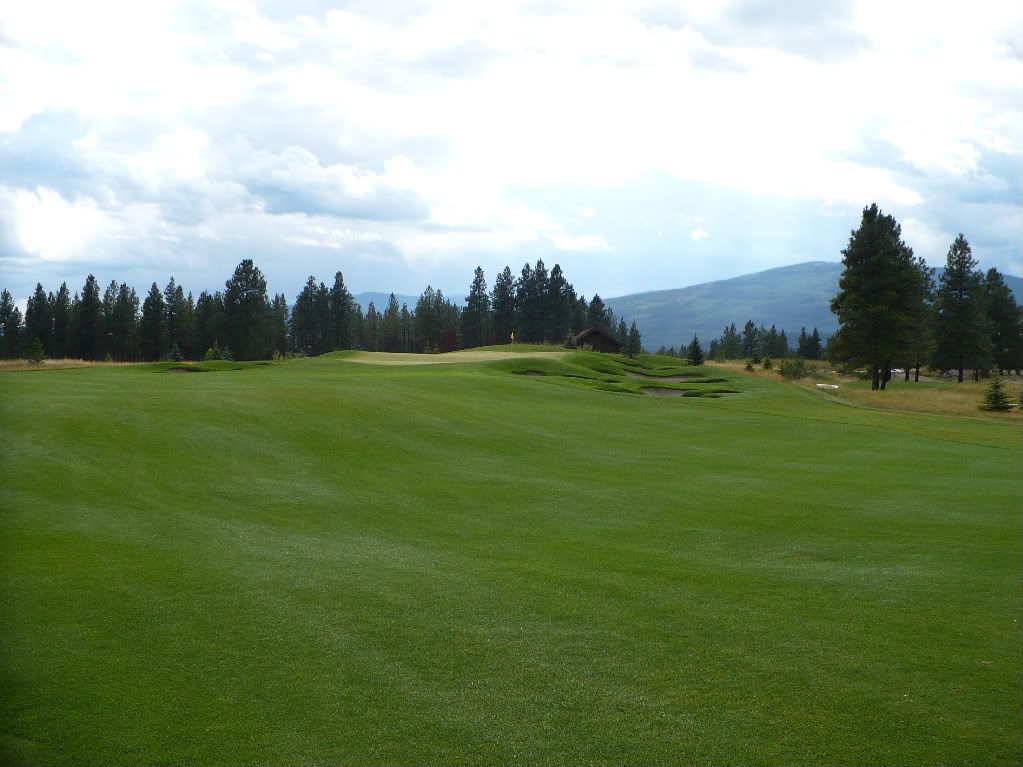
Hole 9: (A very beautiful hole with a lot of drop from the landing area to the green. The pictures tell it better than I could.)
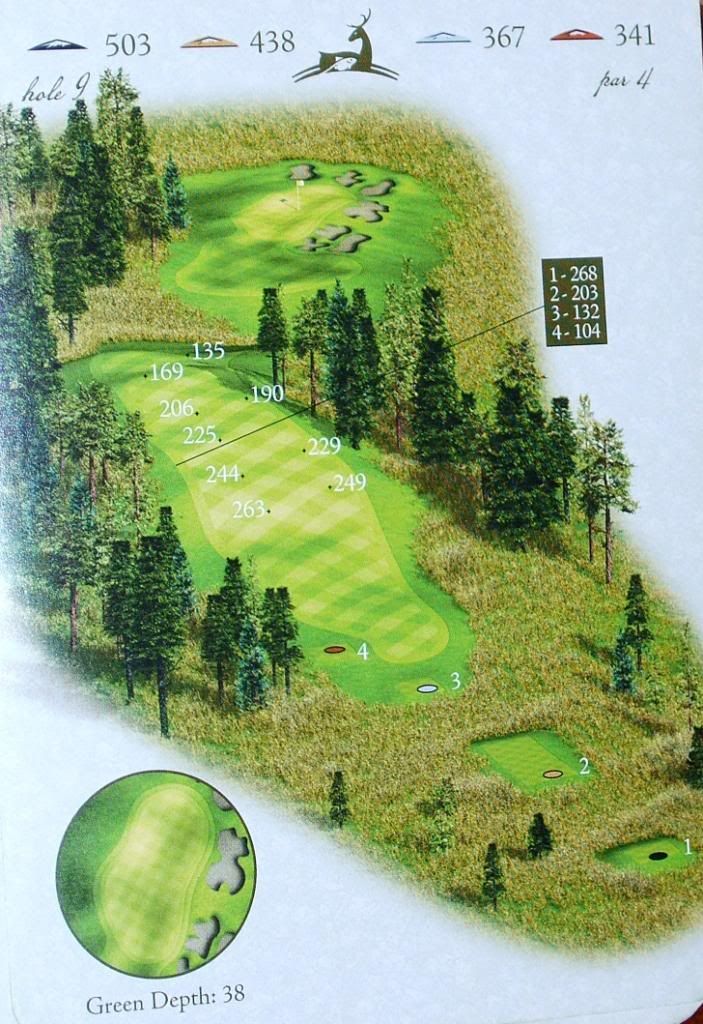
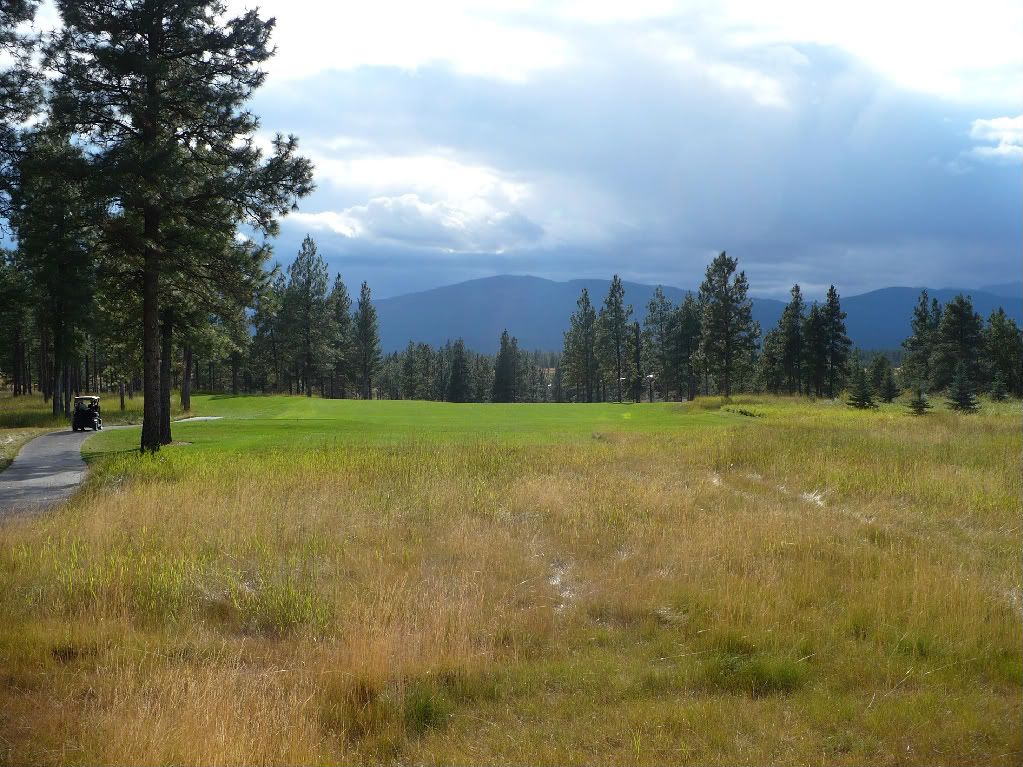
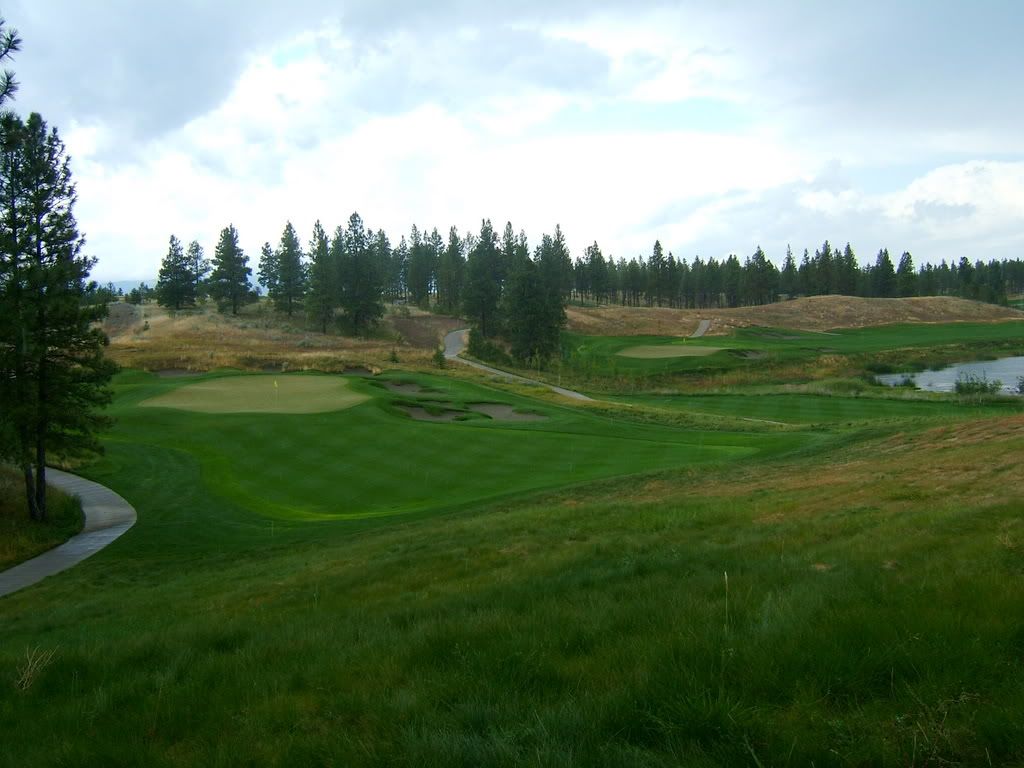
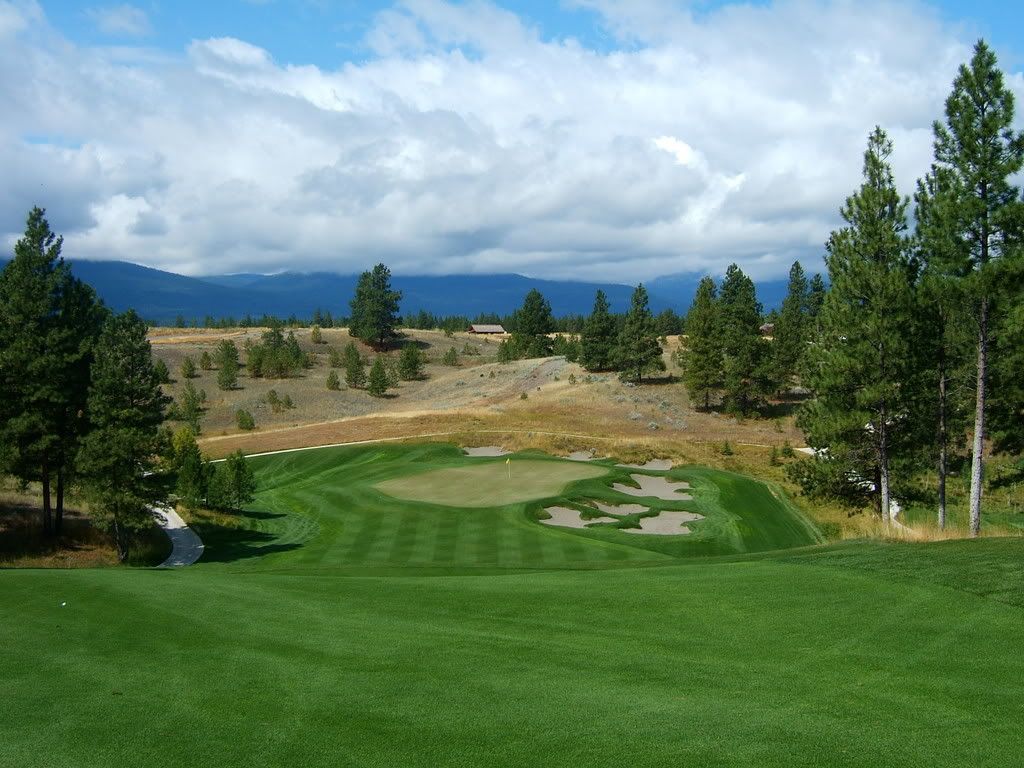

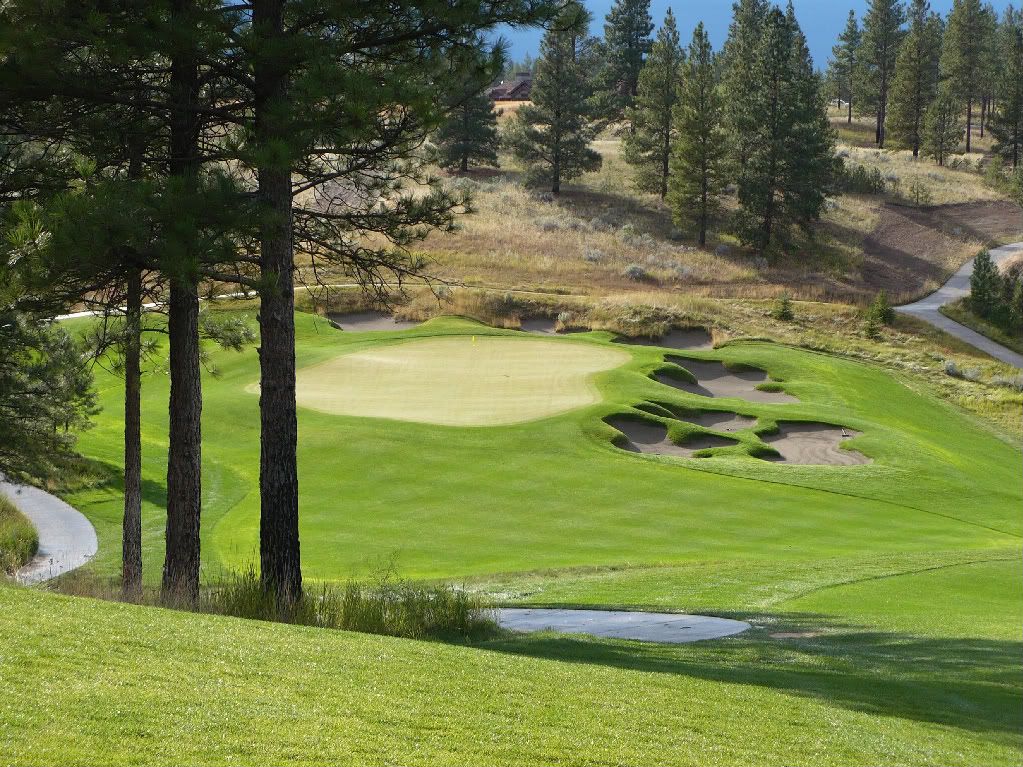
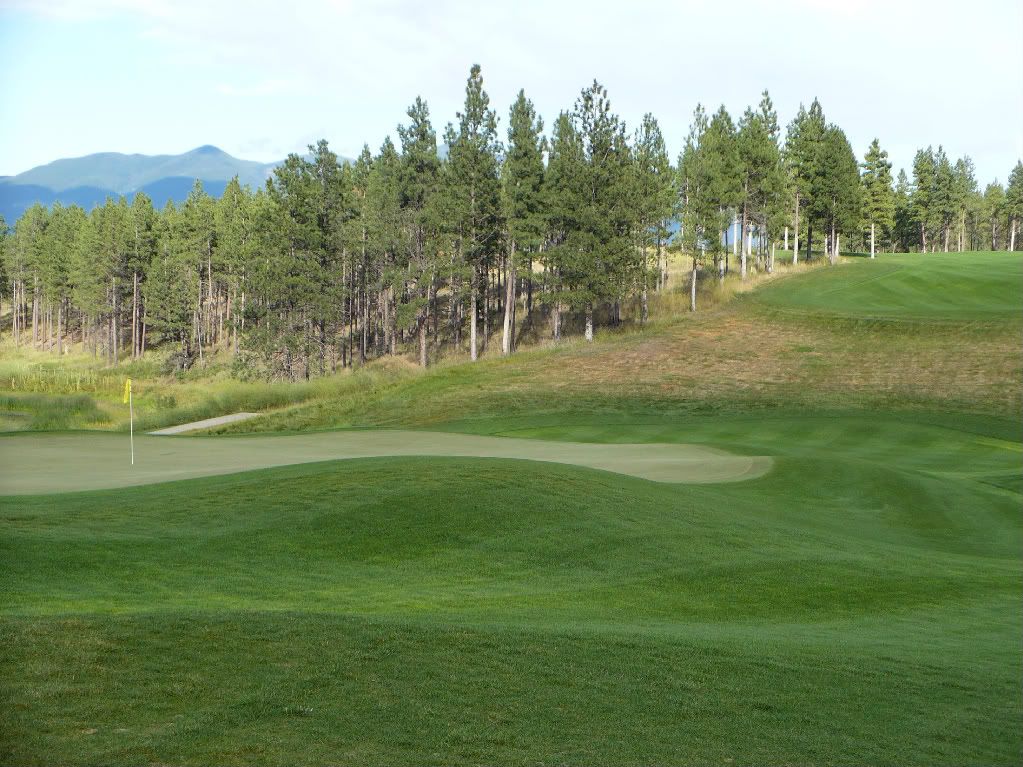
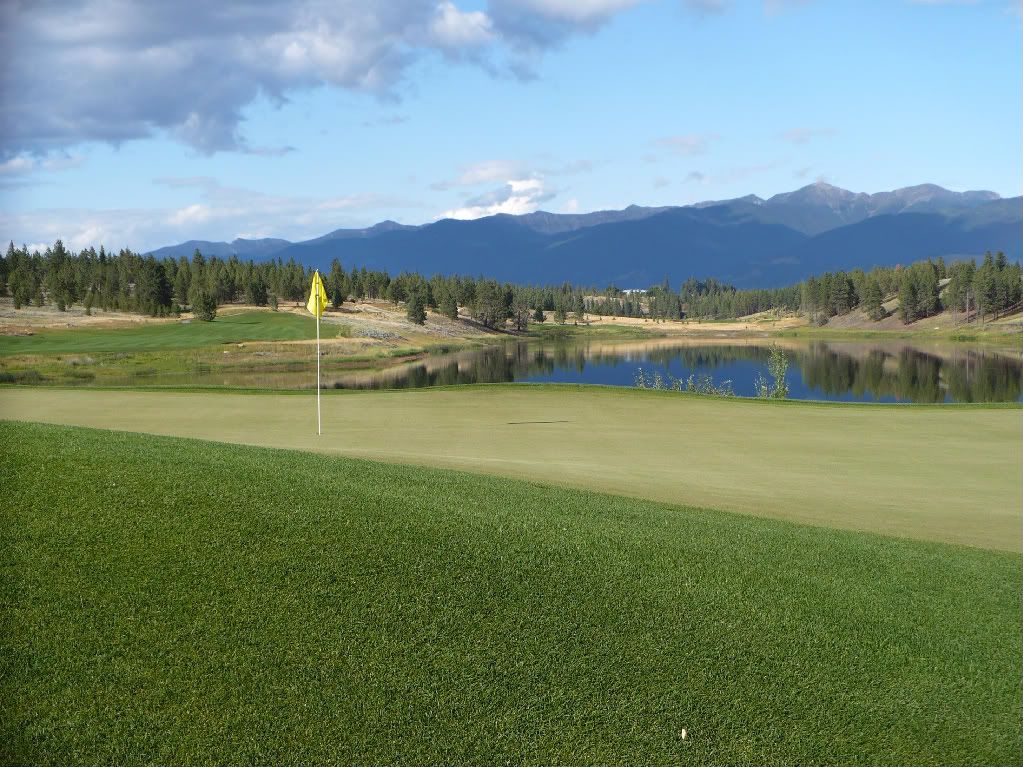

Back 9:
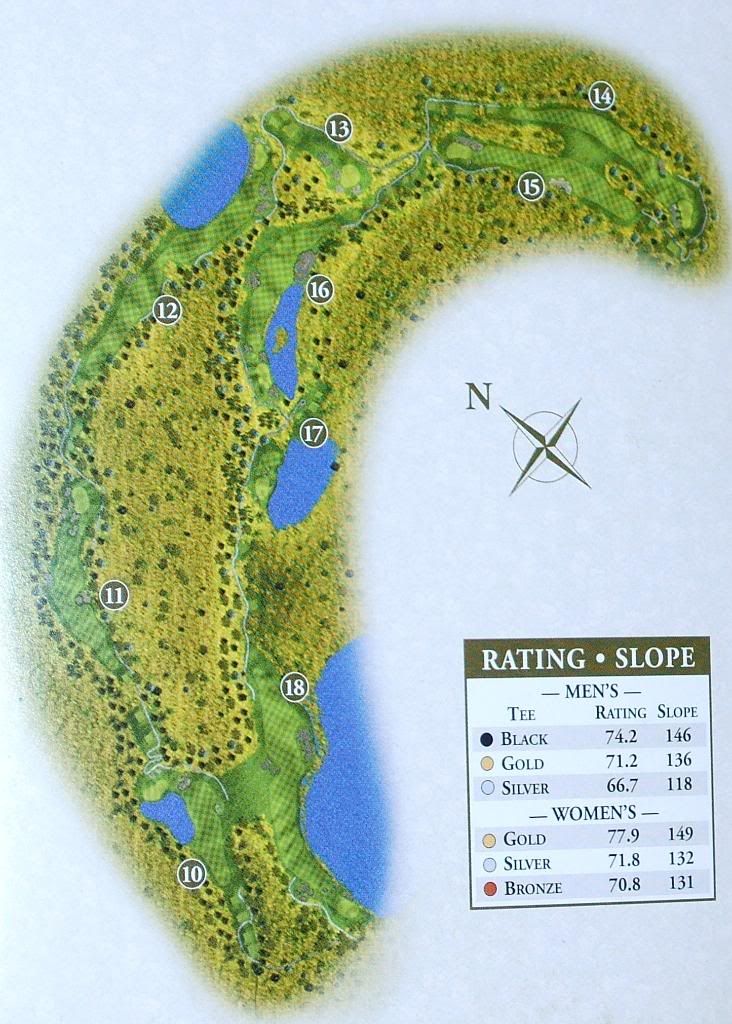
Hole 10: (A fun hole where you could hit from 6-iron to driver off the tee. I found that laying back gave you a much worse angle into the green and really brought the water into play. I played it every time by blasting the driver toward the bunker and then playing sidways to the green. This took away all the danger. But was no guarantee of a birdie or par because of the huge breaks in the green. If you have the distance to drive the green, the right-hand side will accept a driver shot.)
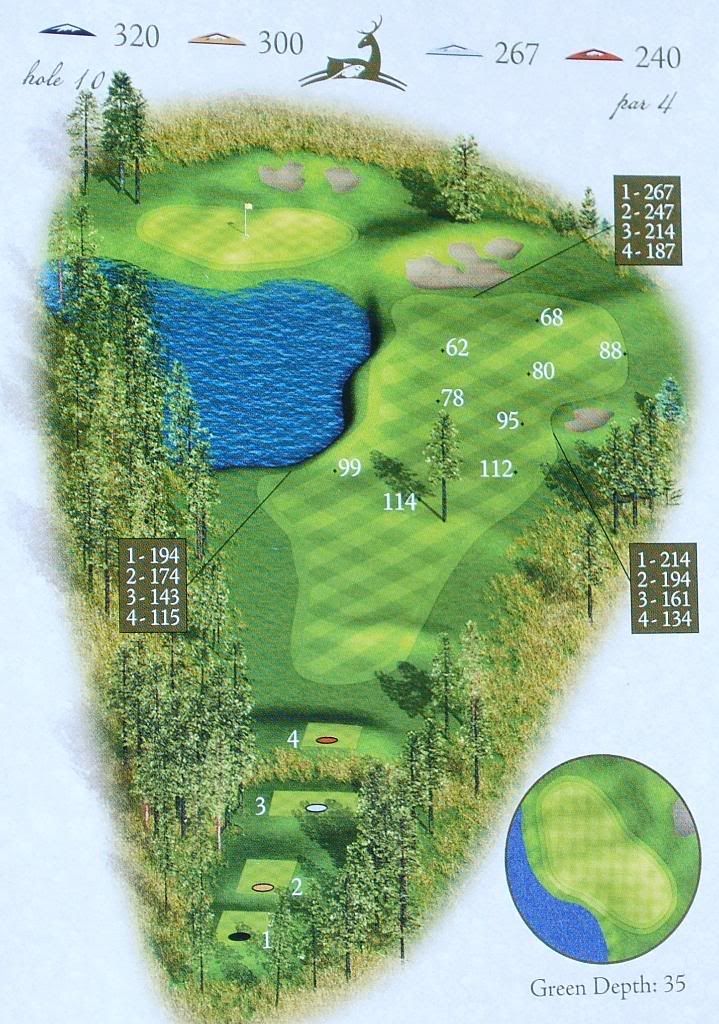

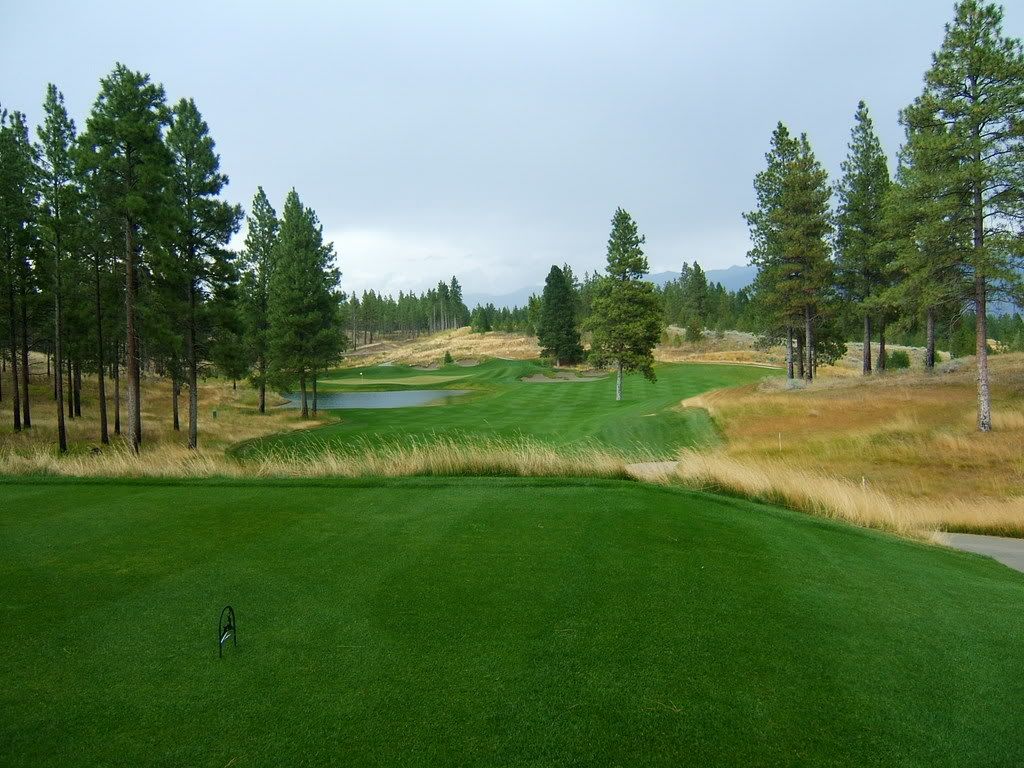
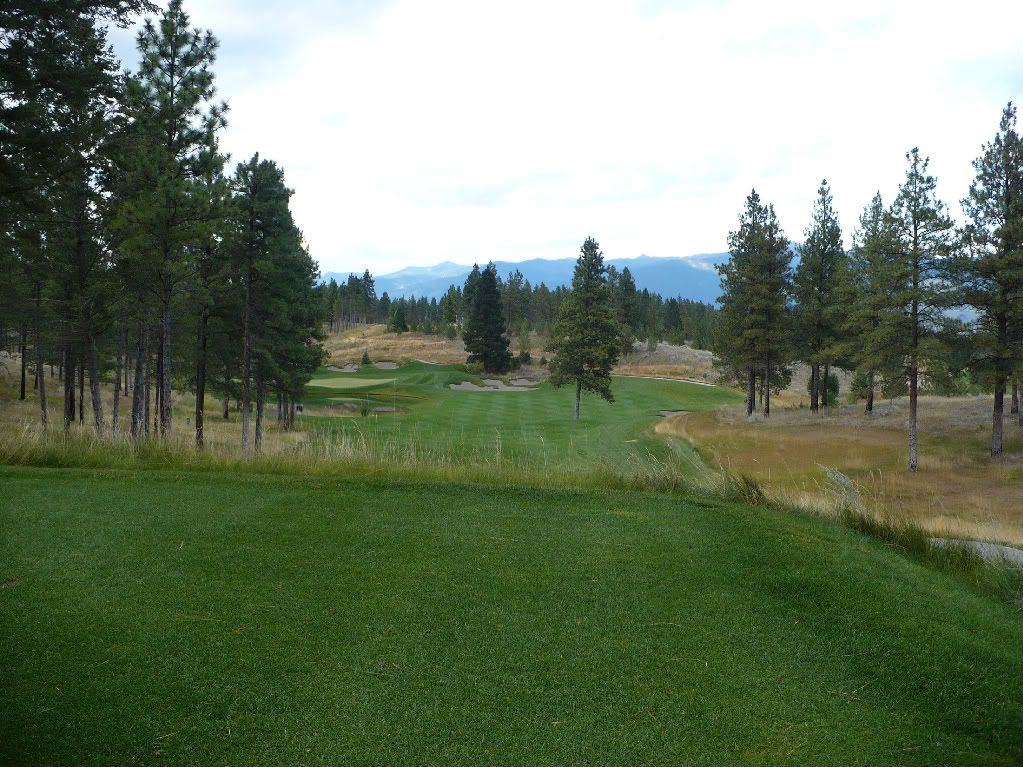
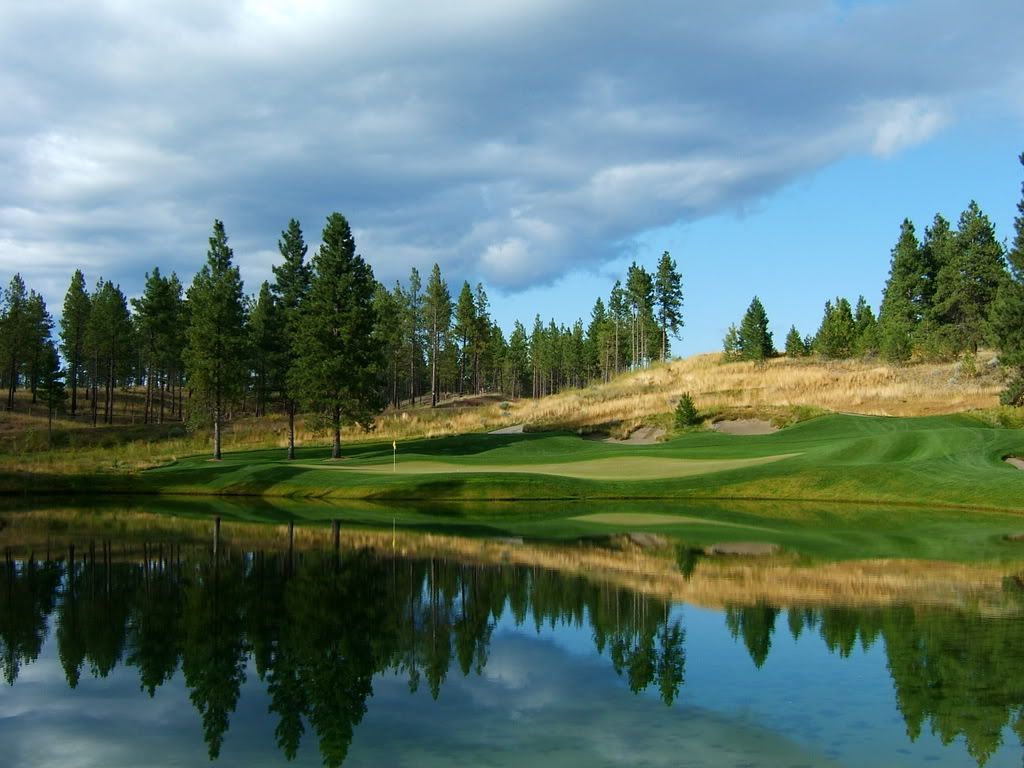
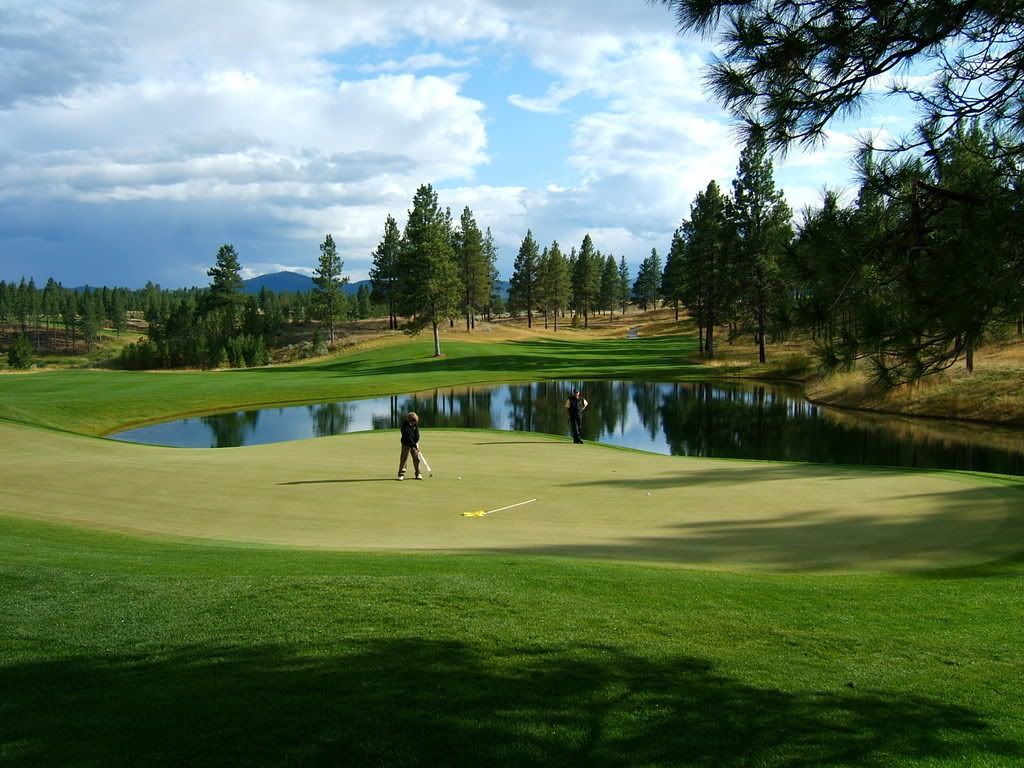

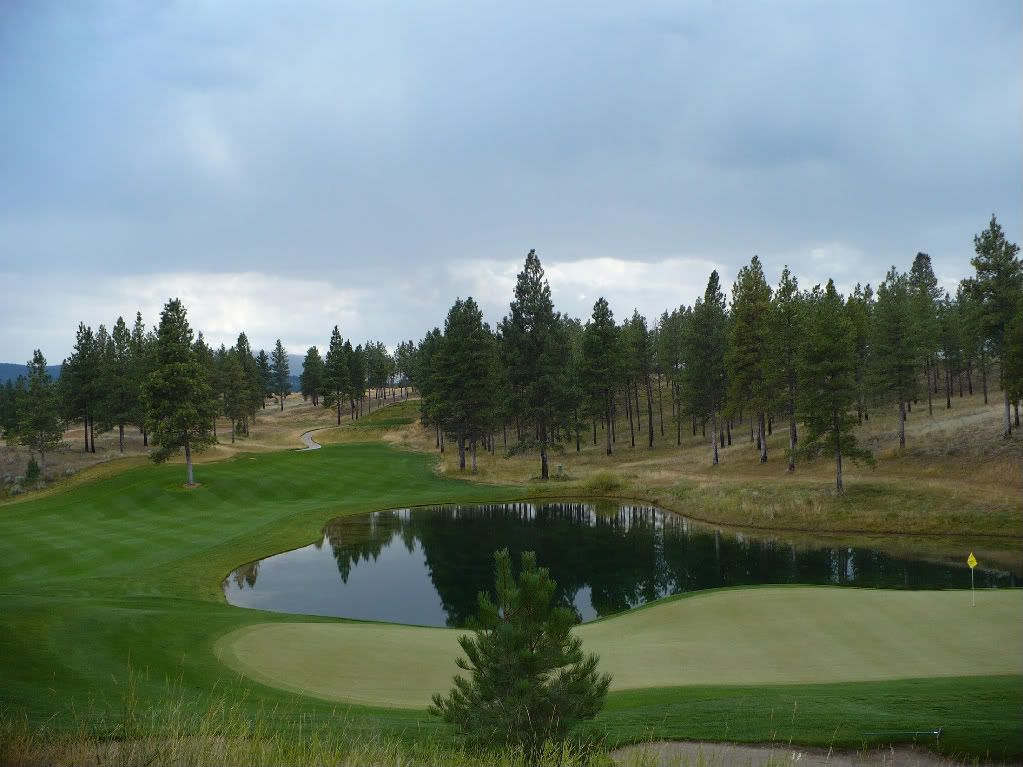
Hole 11: (A nice dogleg hole that rewards playing the riskier shot off the tee with an easier second shot.)
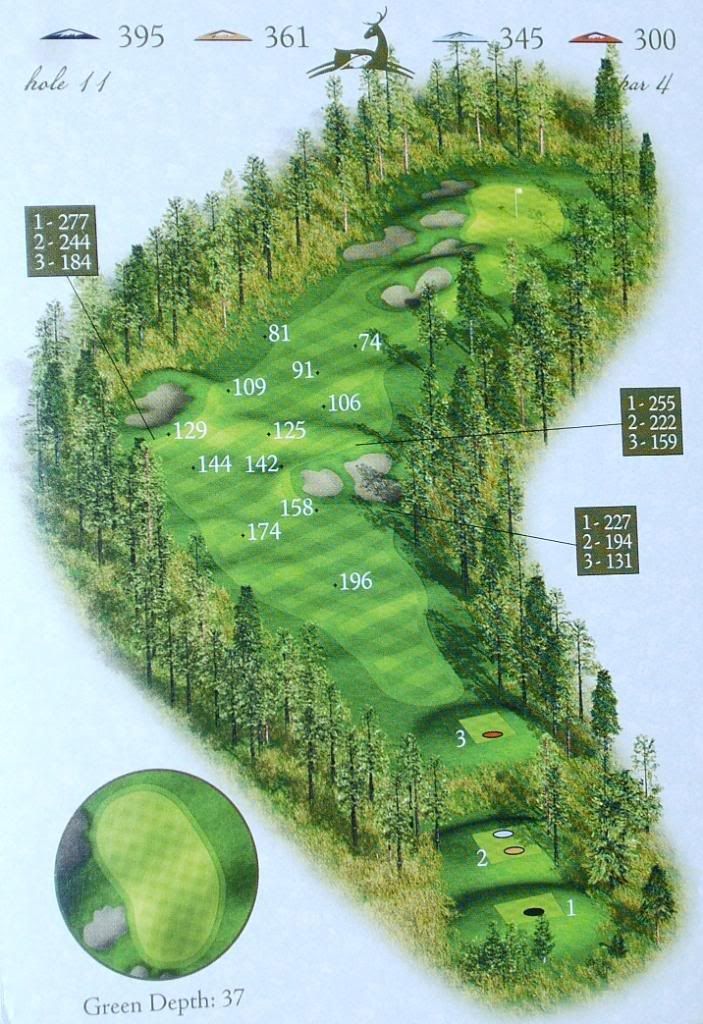
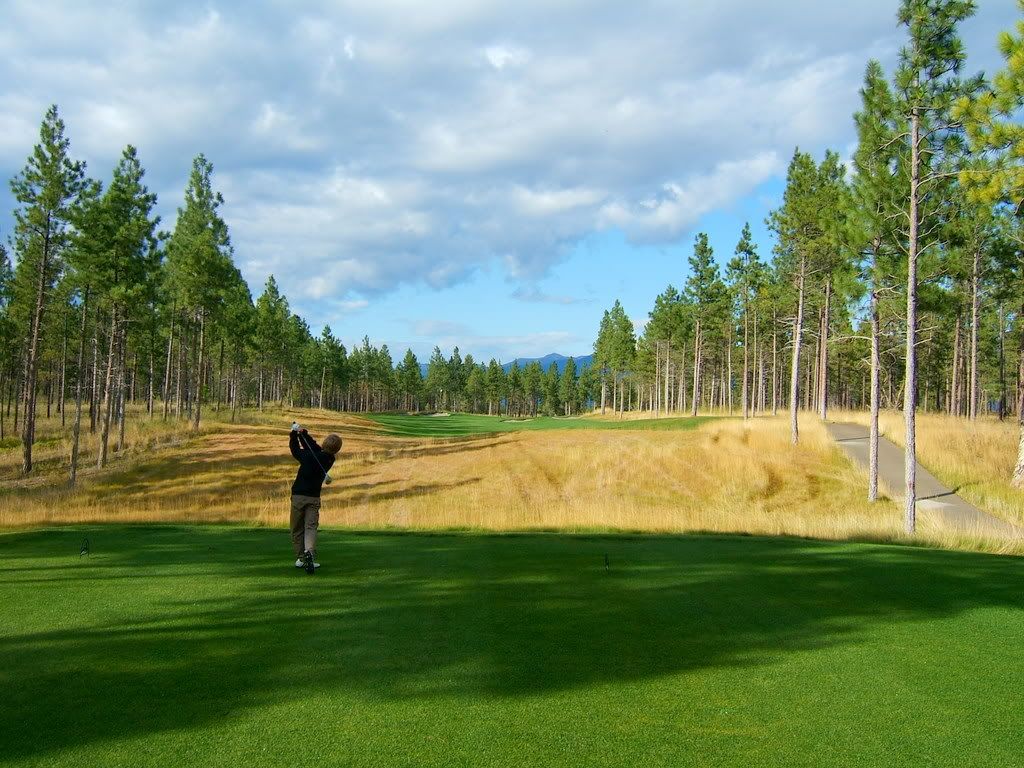

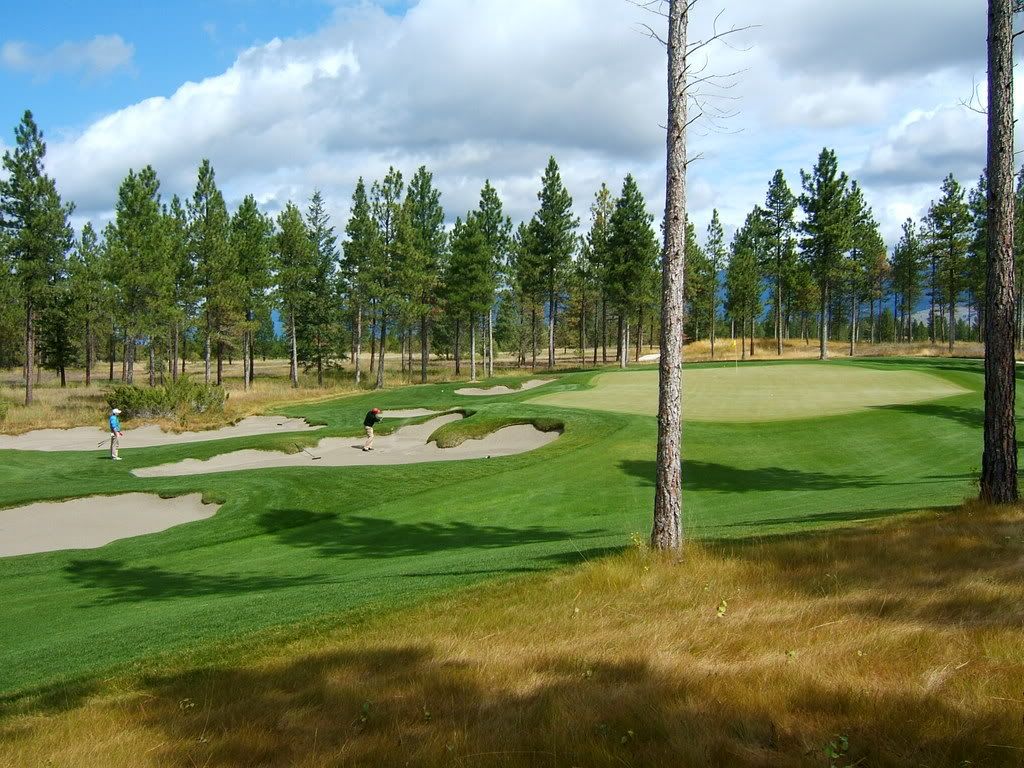
Hole 12: (A longish downhill par 5 where the monstrously long hitters can gain a huge turbo-boost off the tee. The last time I played it I hit 5-iron, 5-iron, 5-iron, though and just missed my birdie so it needn’t be too difficult.)
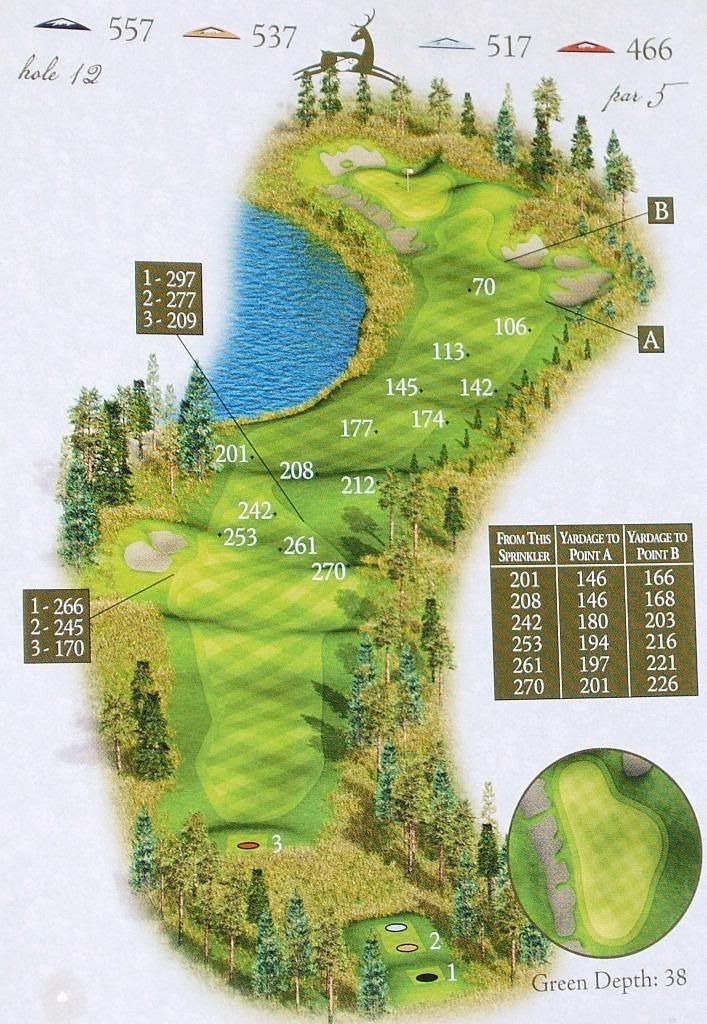


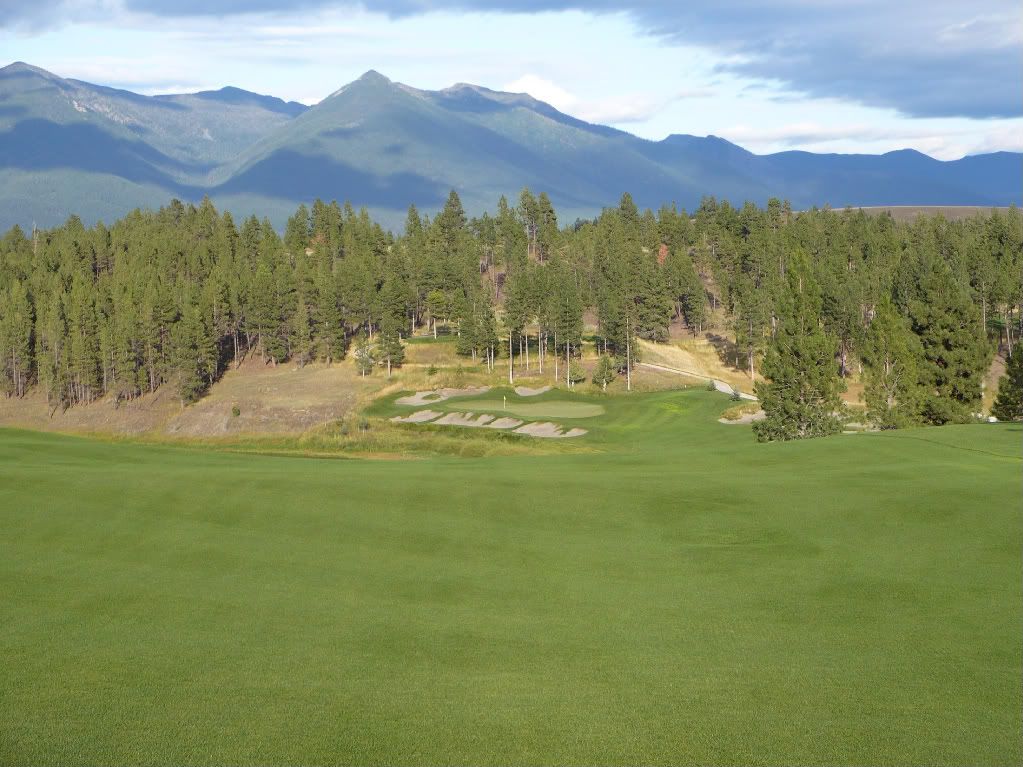
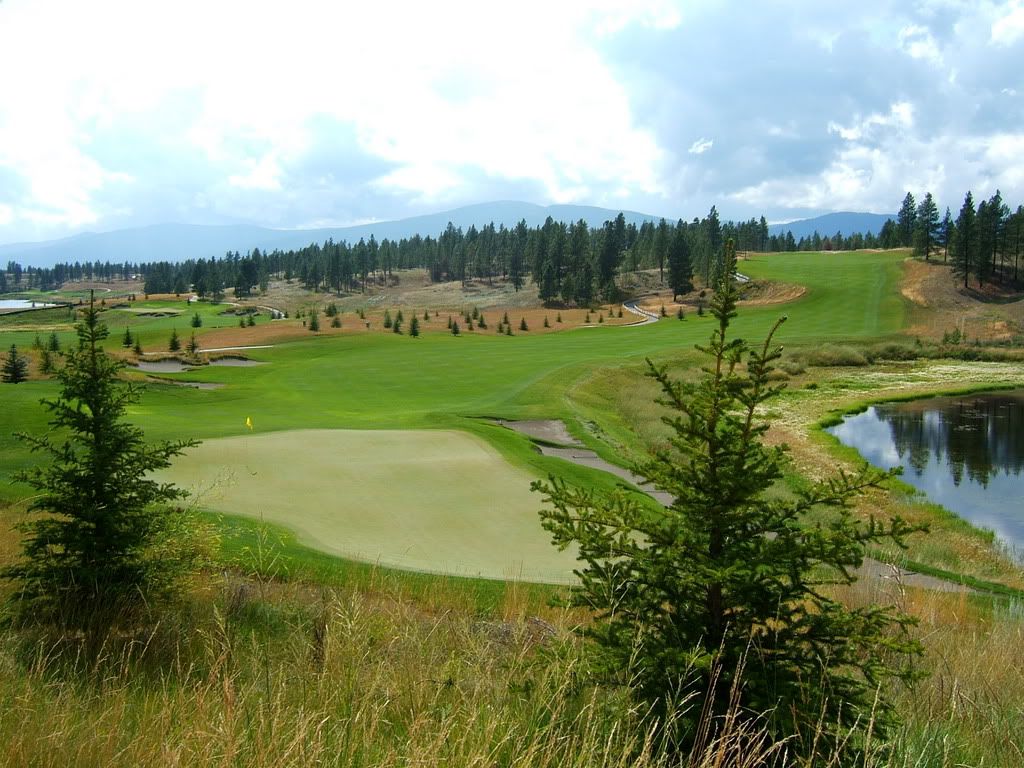
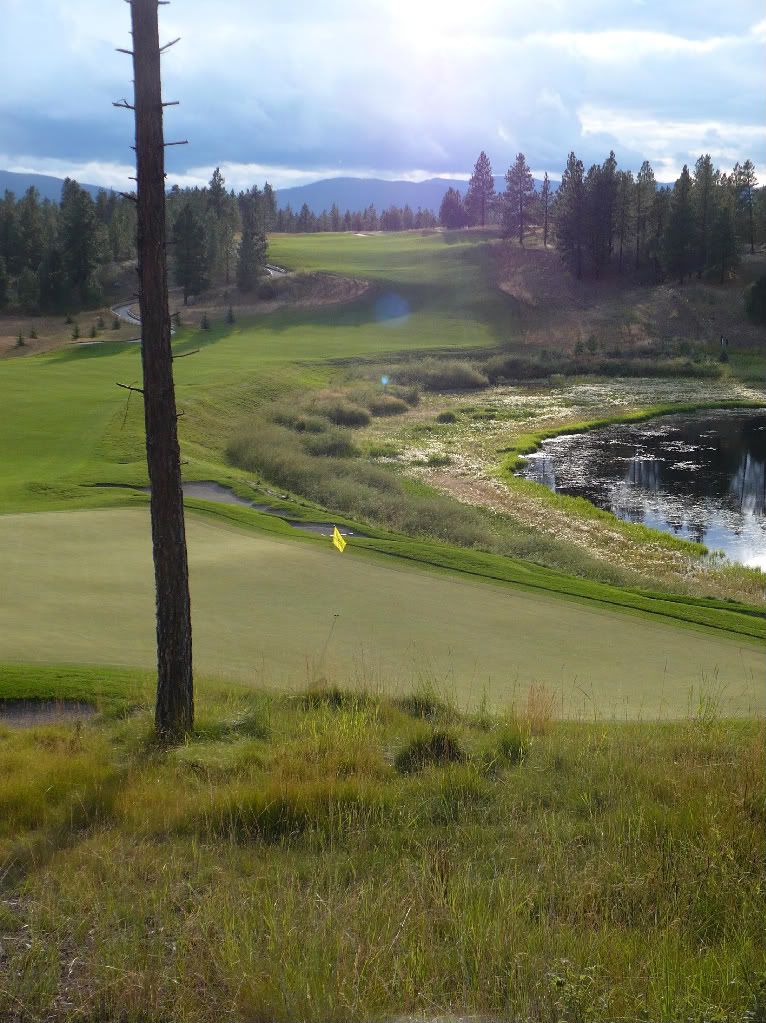
Hole 13: (Shortish par 3 that has some nice helping green contours to move the ball back to the right.)
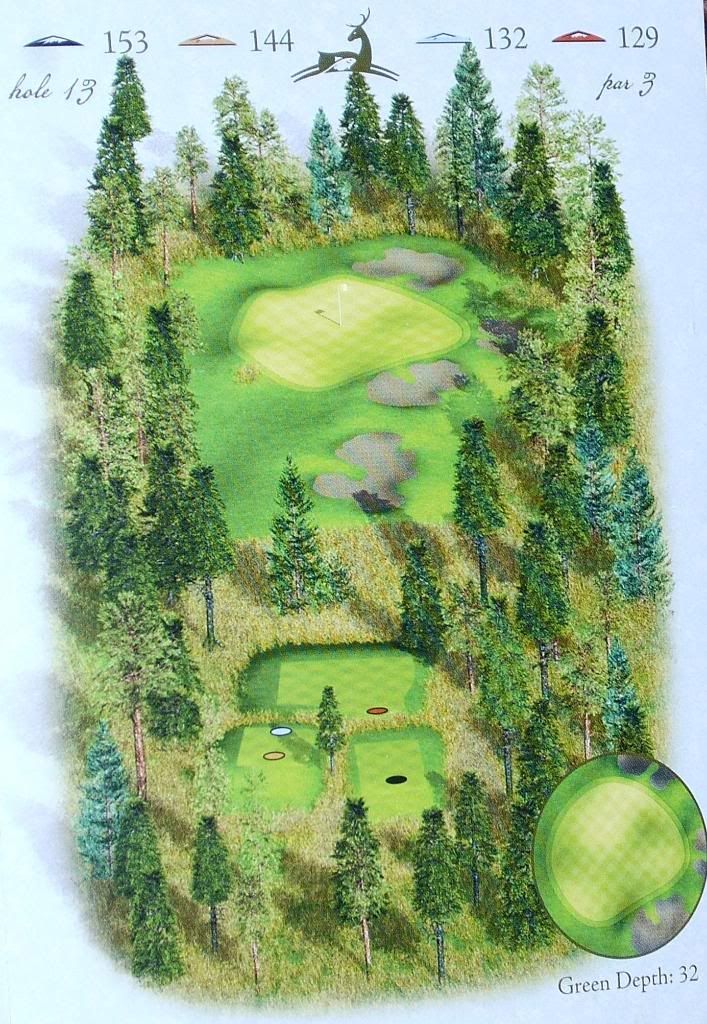

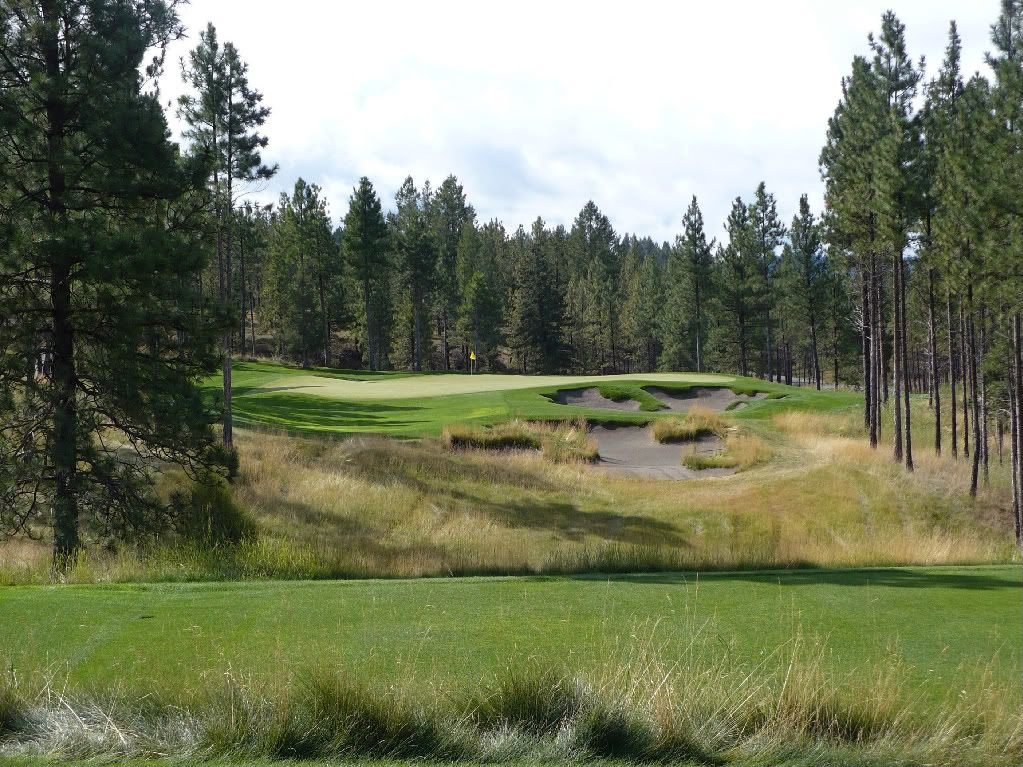
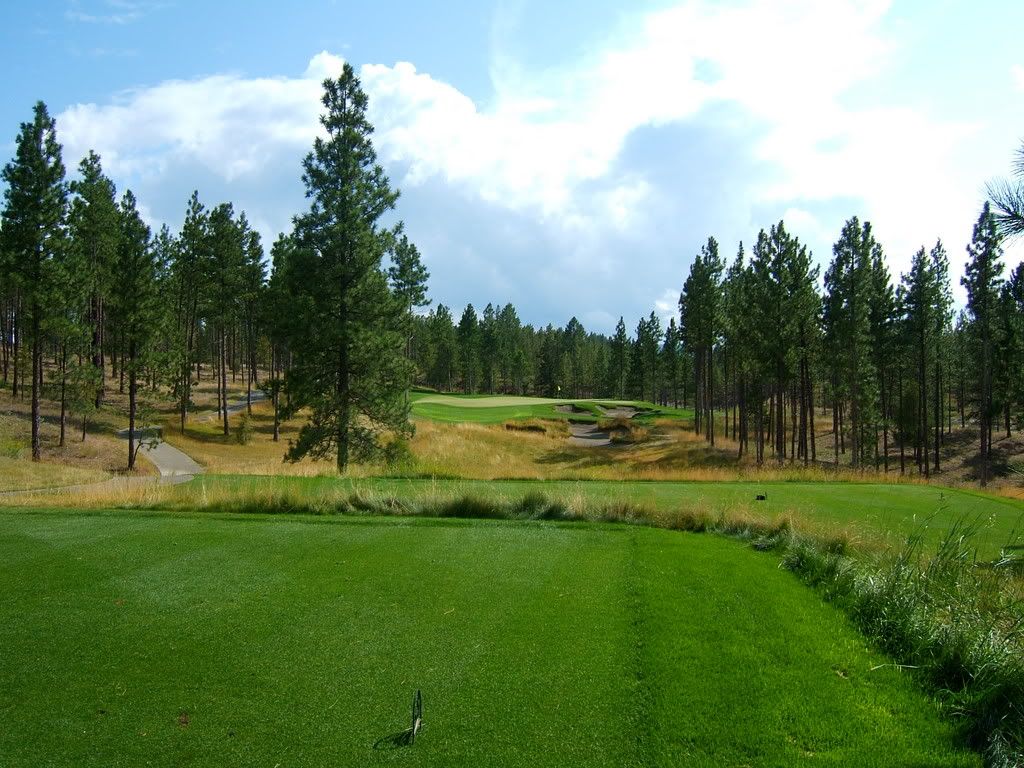
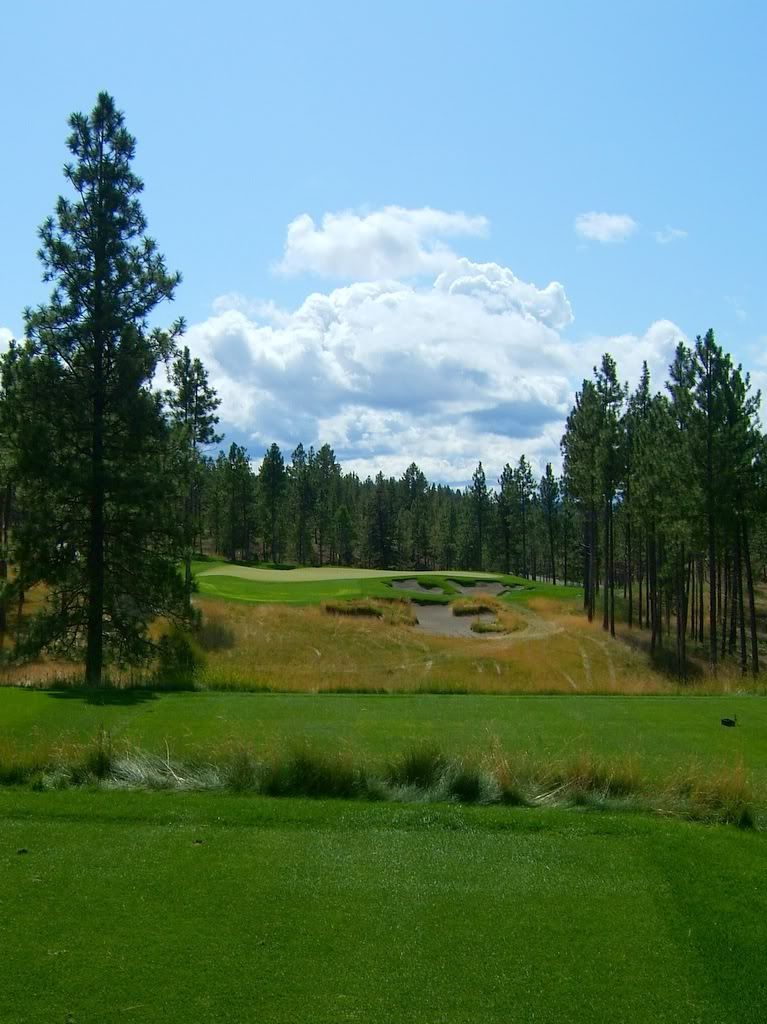
Hole 14: (Long par 4, not overly interesting except that it’s across the road from a beekeeper so you see a lot of honeybees when playing. They never gave us any trouble.)
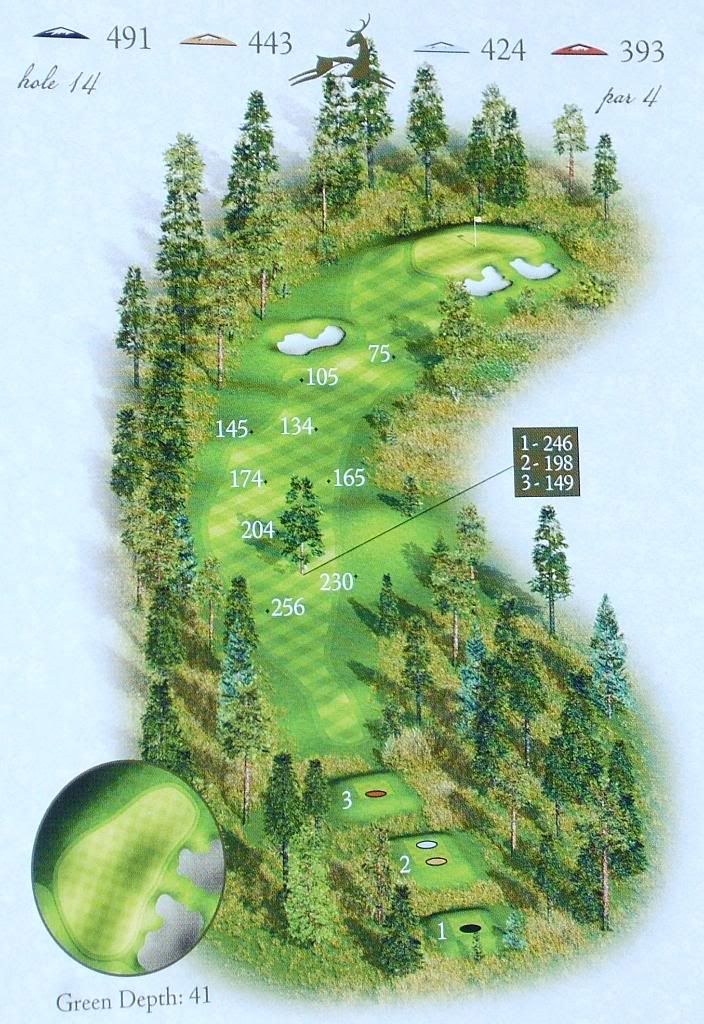
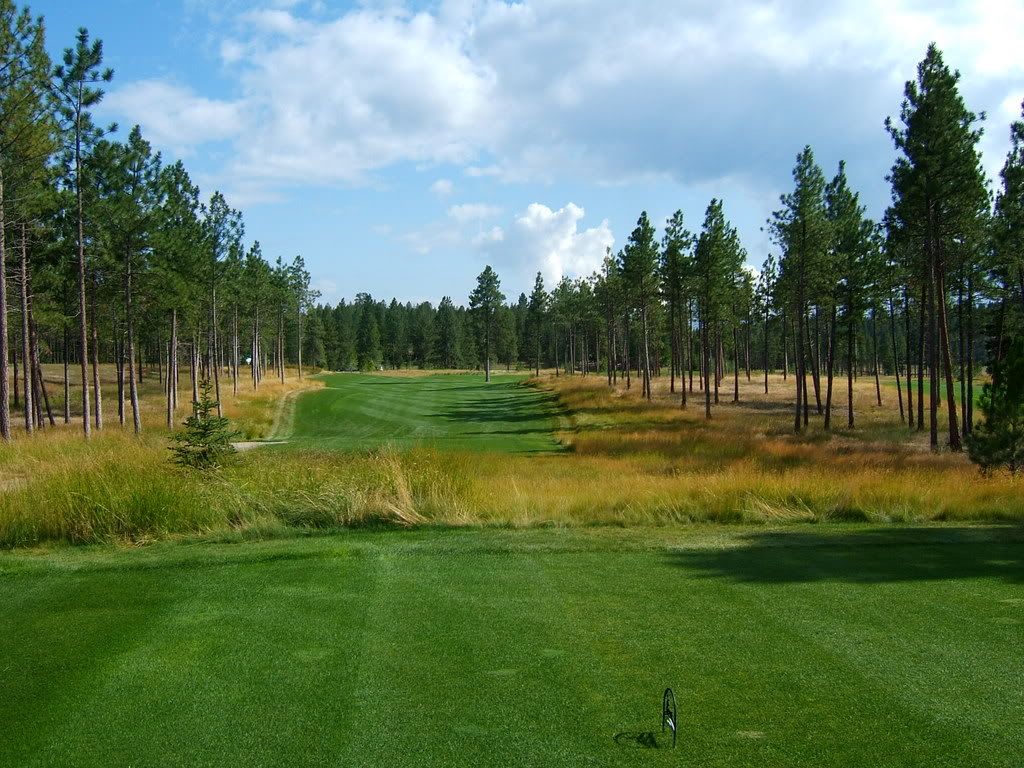
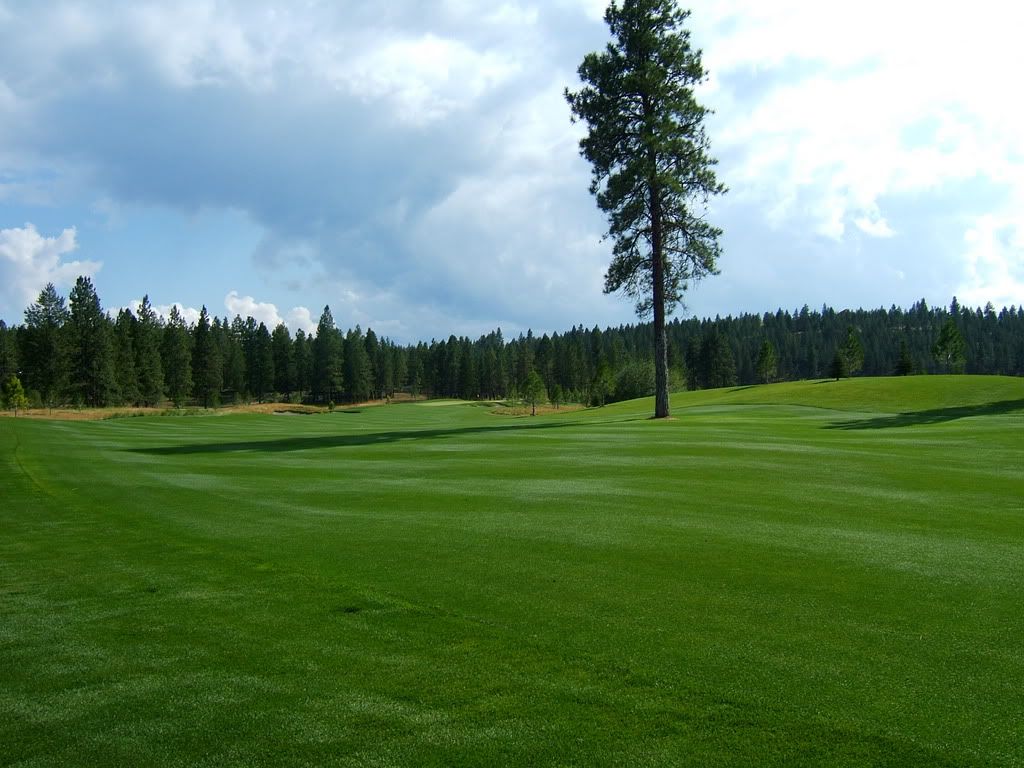
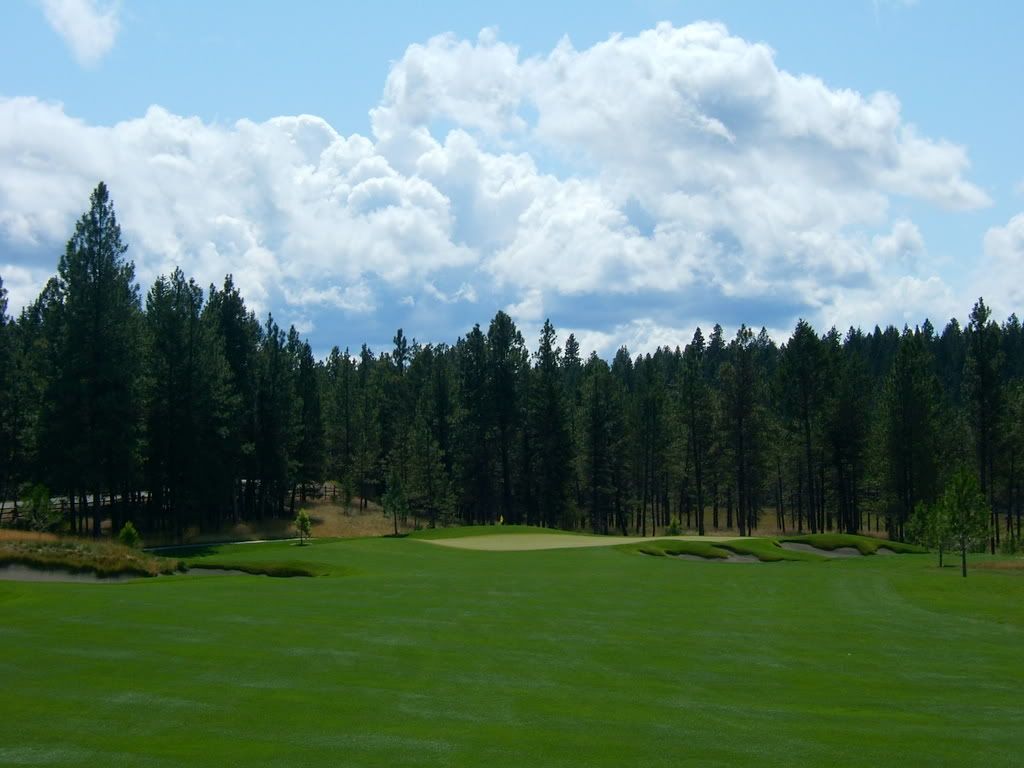

Hole 15: (Medium-length par 4 with a deep green that is quite steep.)
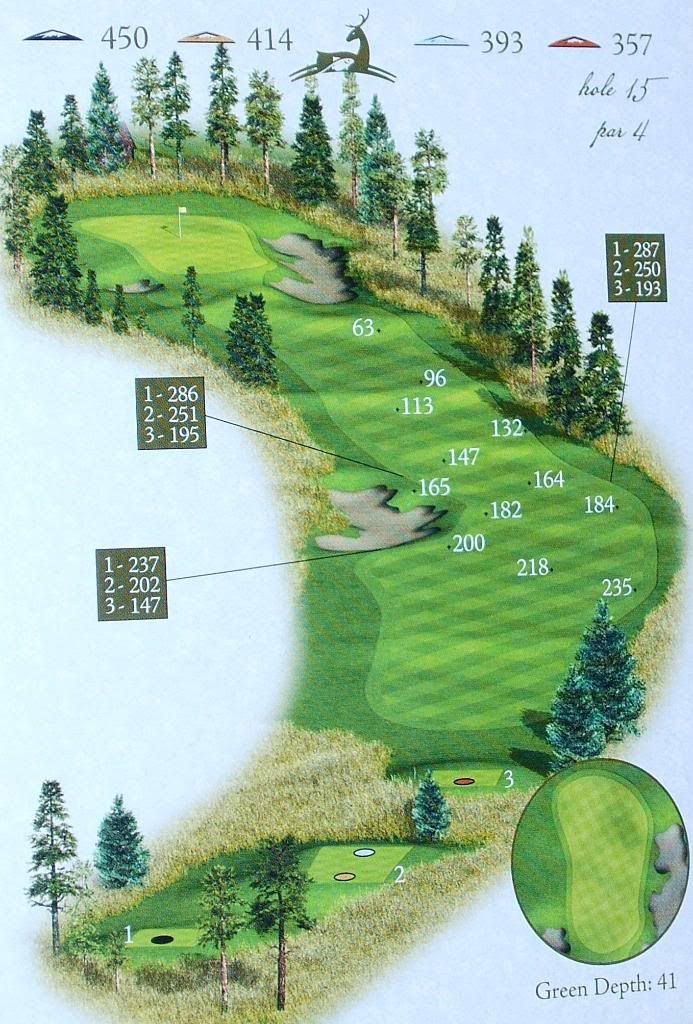
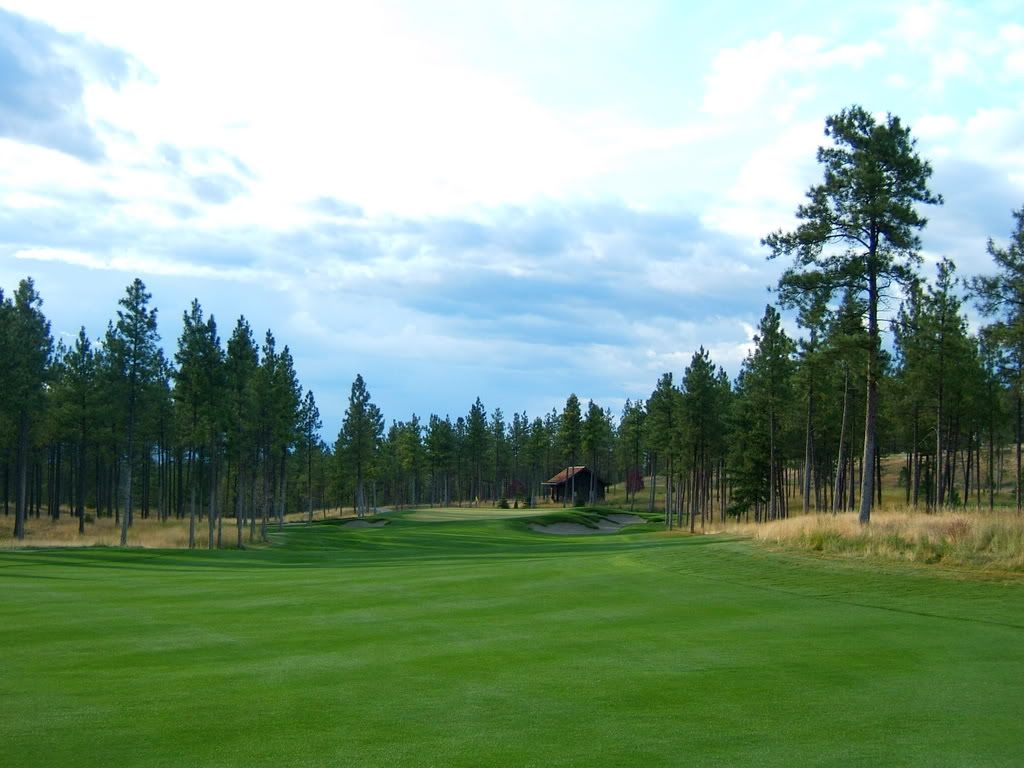
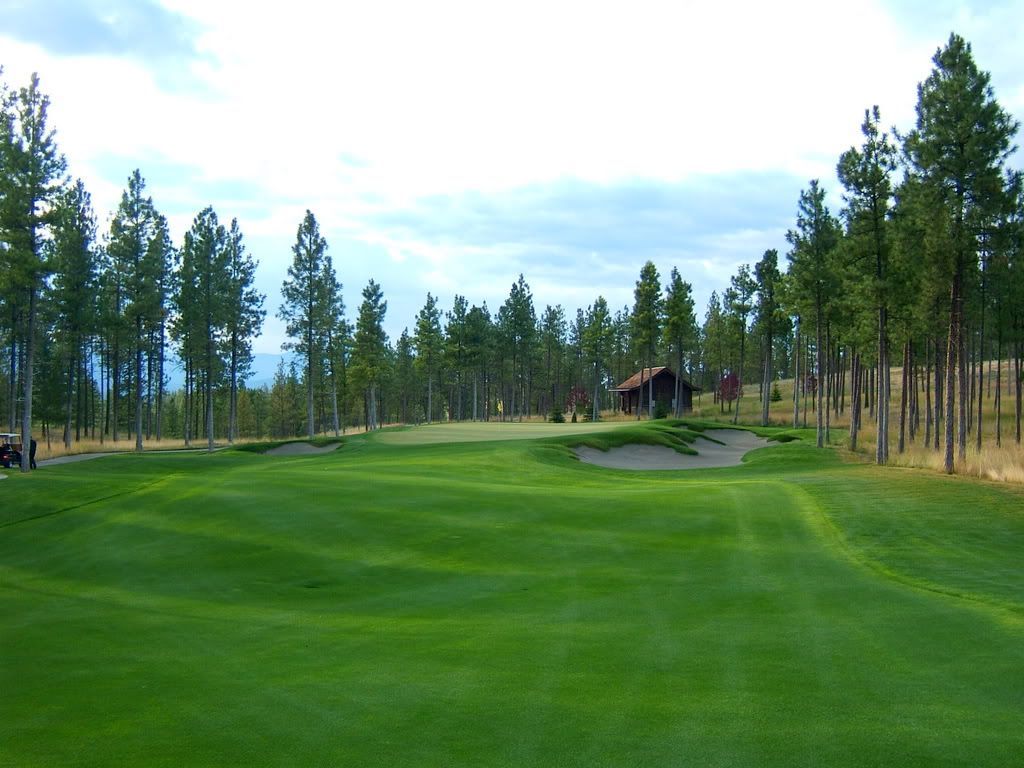

Hole 16: (Fun medium par 4 with the “hanging tree” that can serve as a target. I tended to play out toward the bunker on the right.)
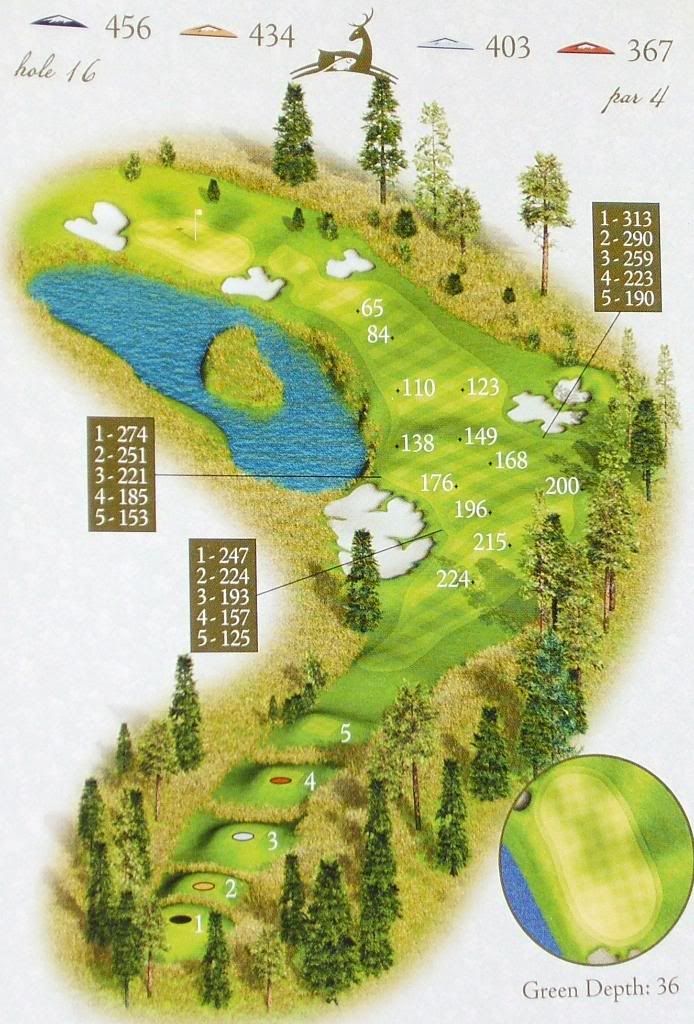
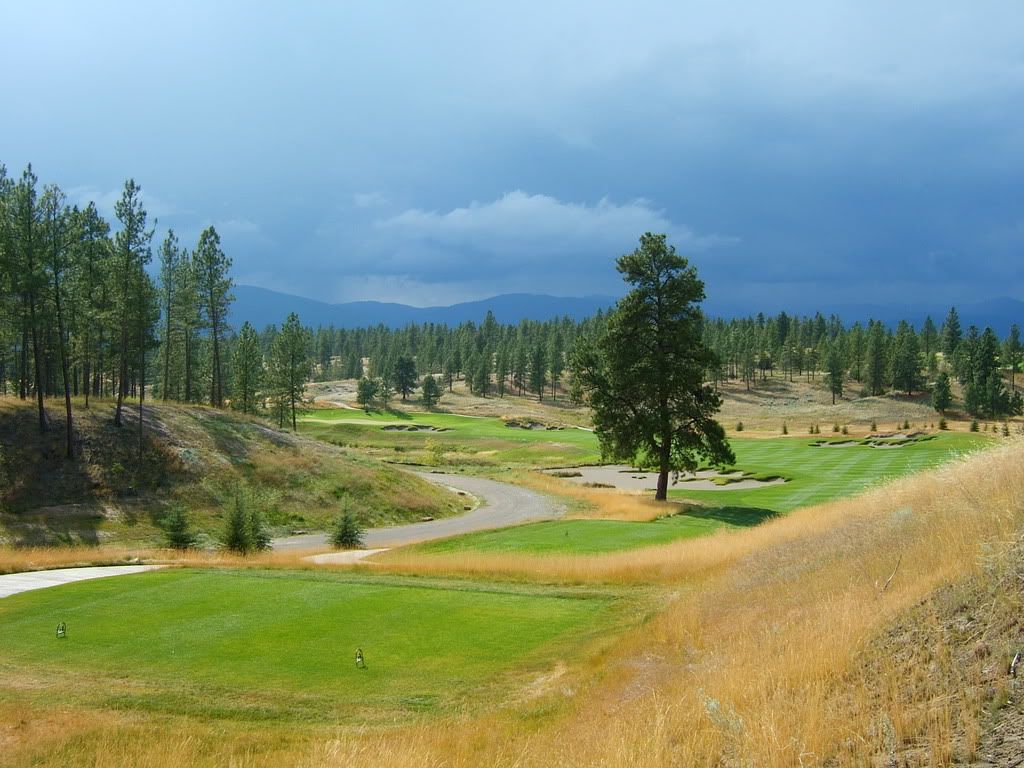
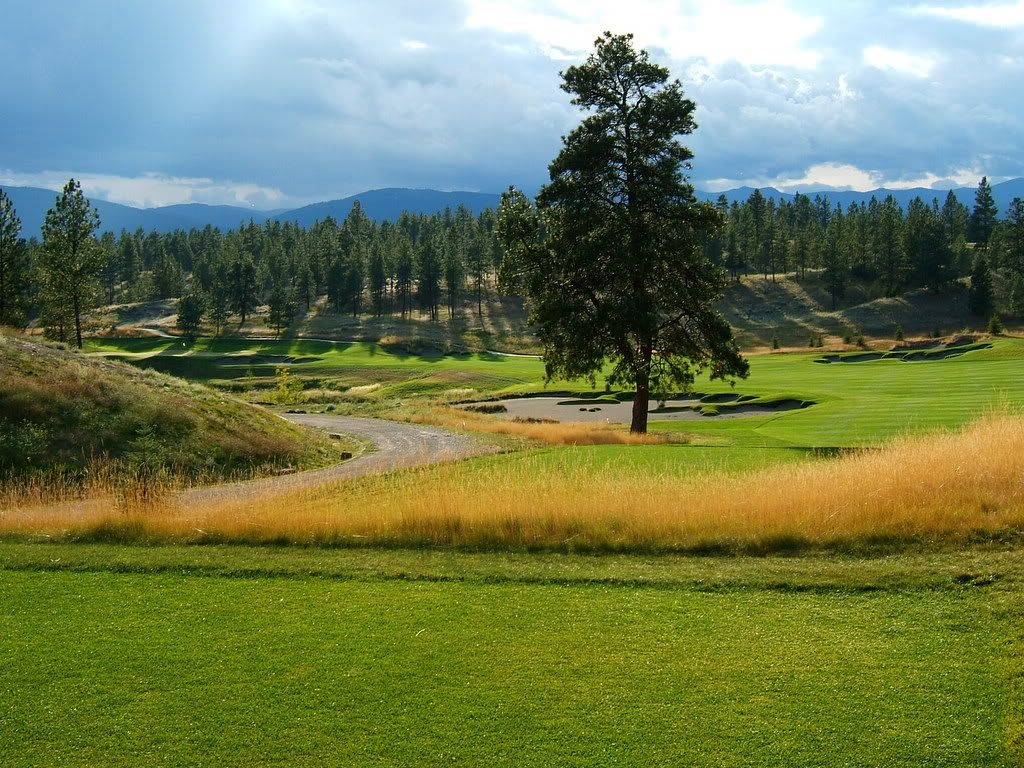
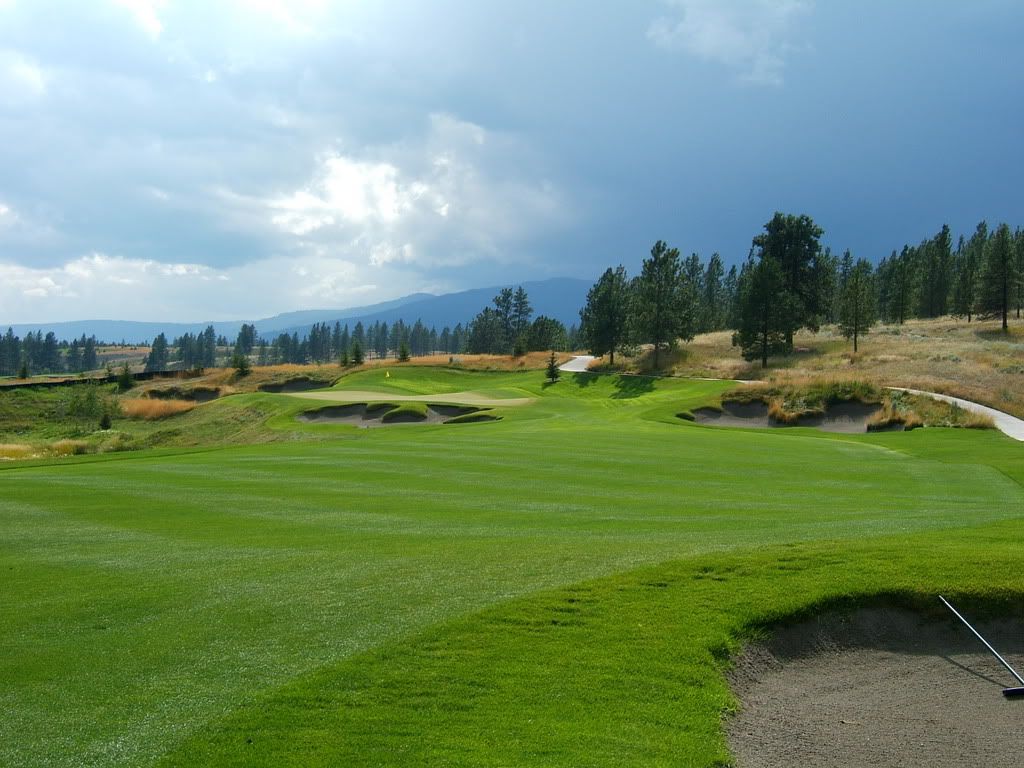

Hole 17: (Cool medium par 3 with a super green. There is a huge hogs’ back running through it that filters all but the best shots toward the right hand edge of the green. If you have the guts and accuracy to take it at the left half of the green, you stood a good chance of knocking it close because that side had a bowl-effect to it.)
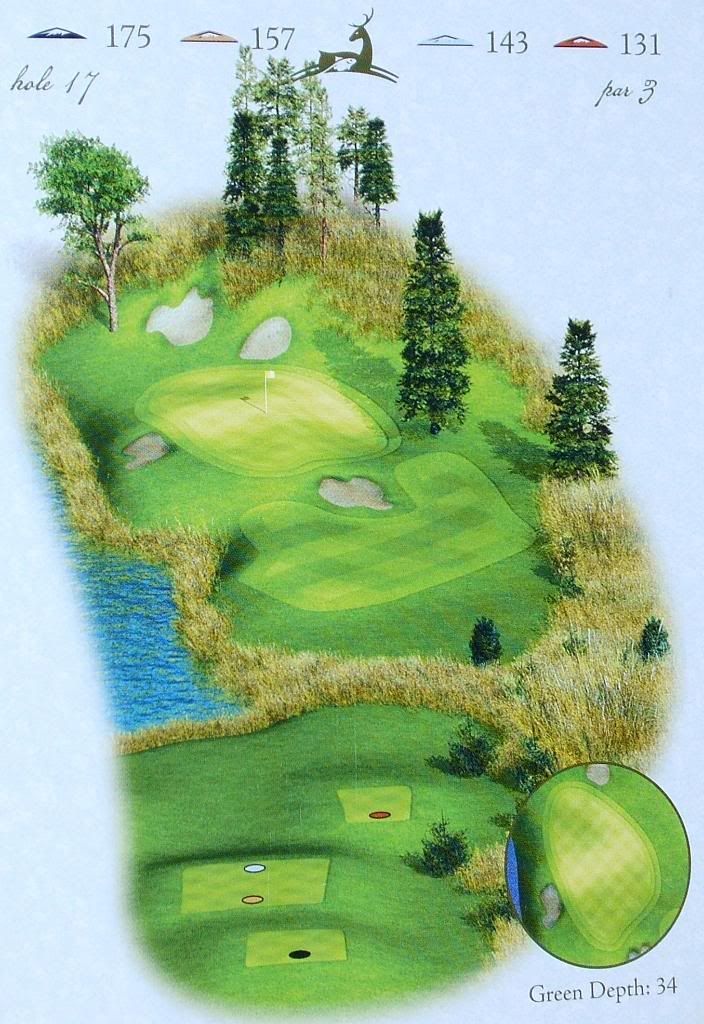
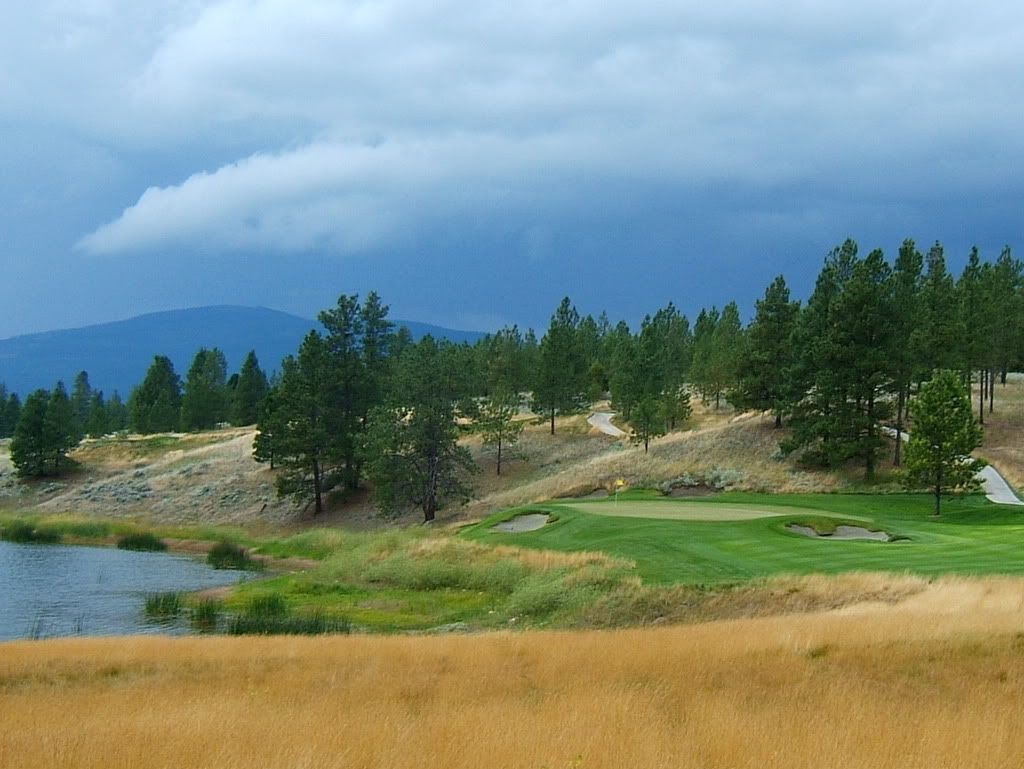
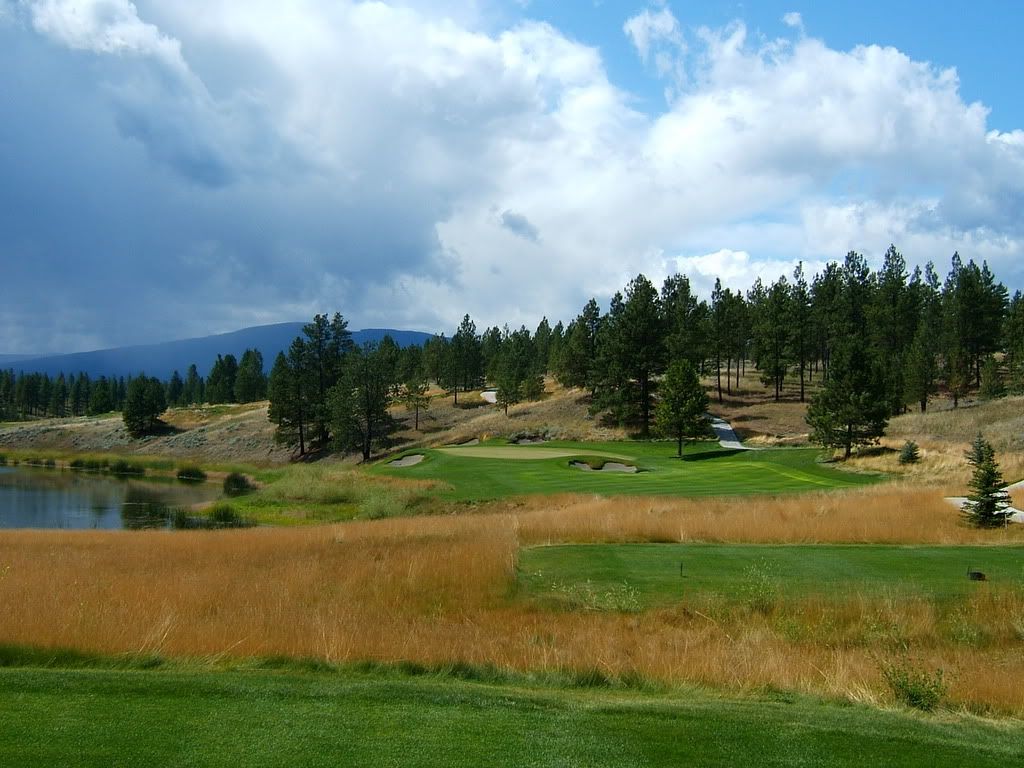
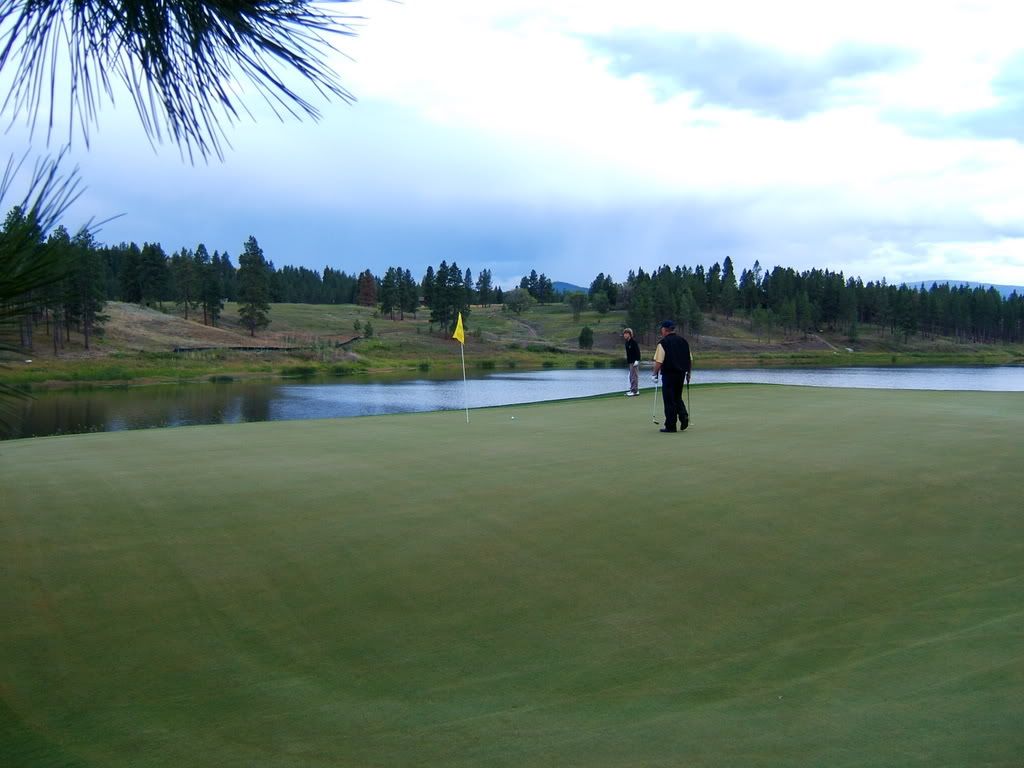
Hole 18: (Longish par 5 requiring a decent tee shot. The green slopes from front to back.)
